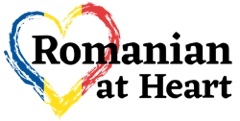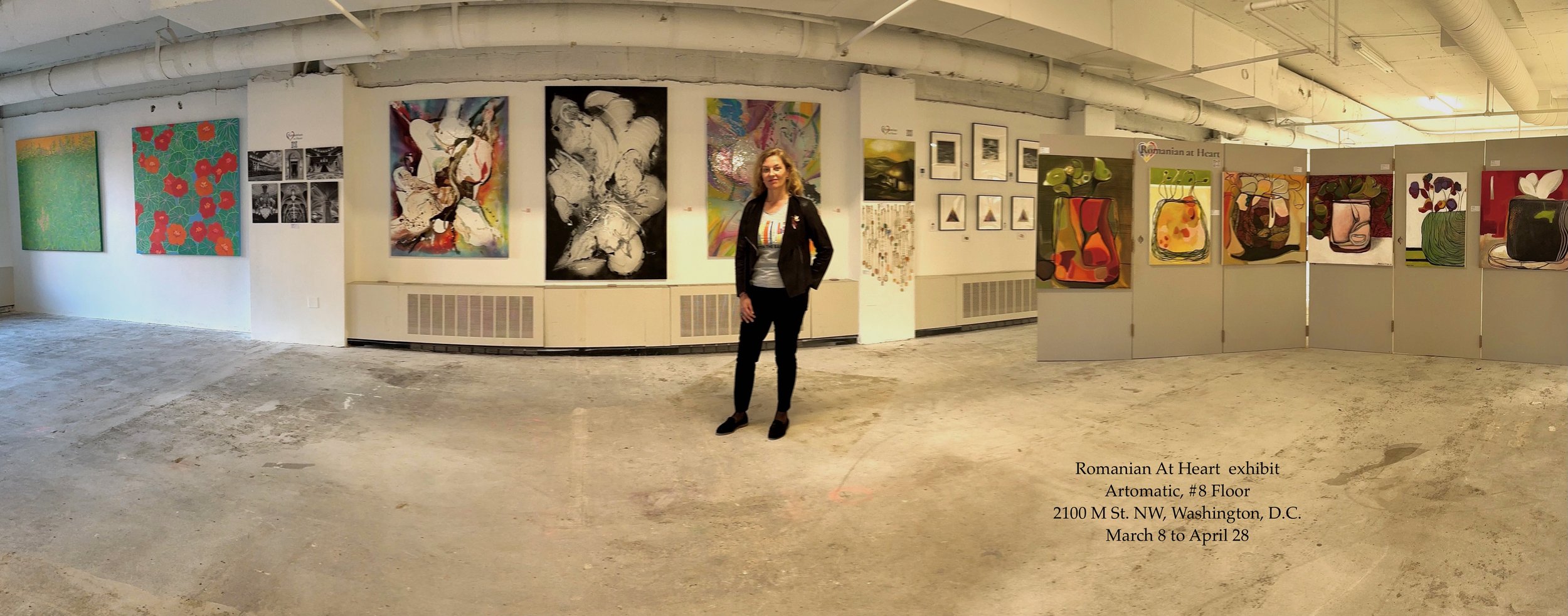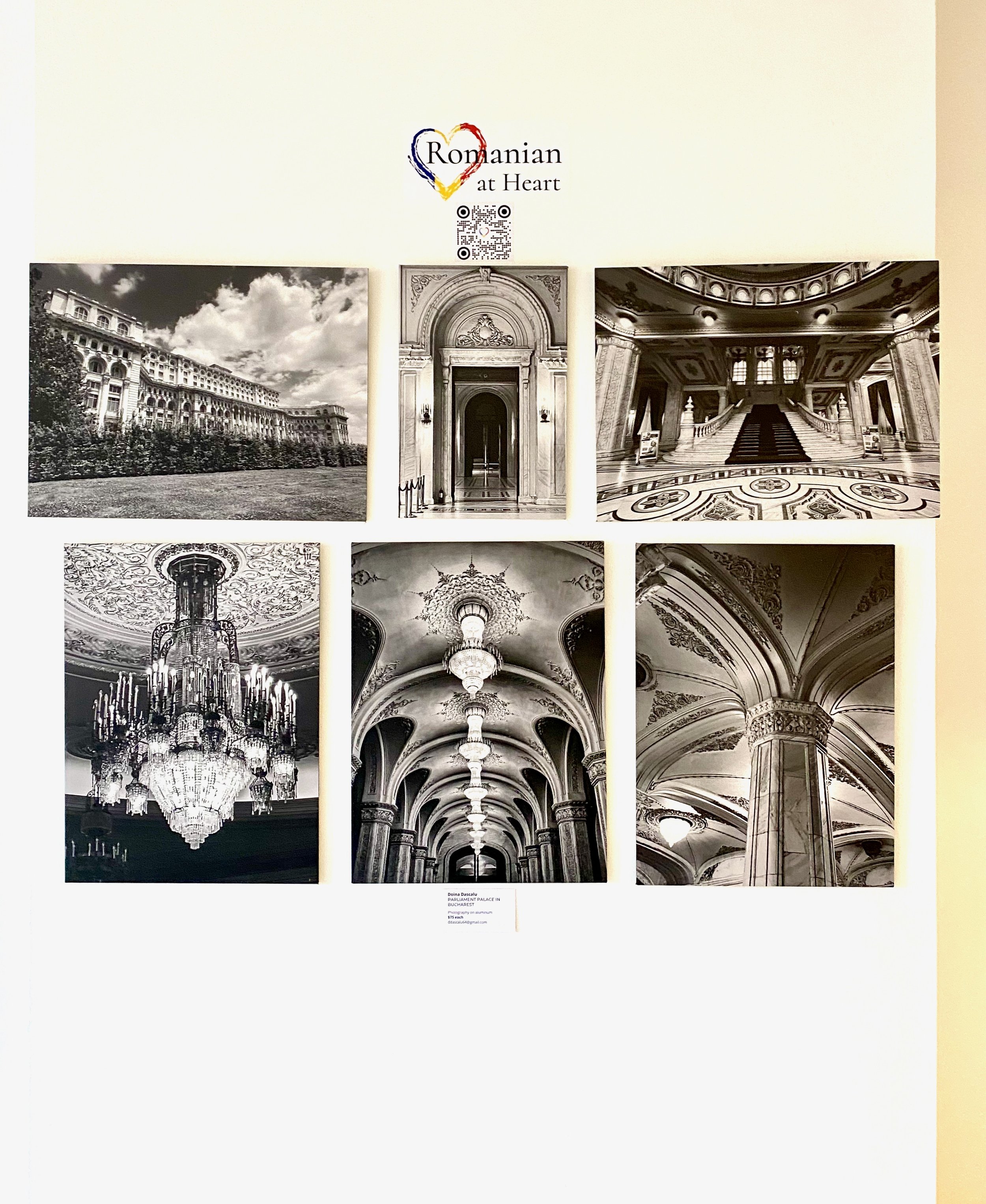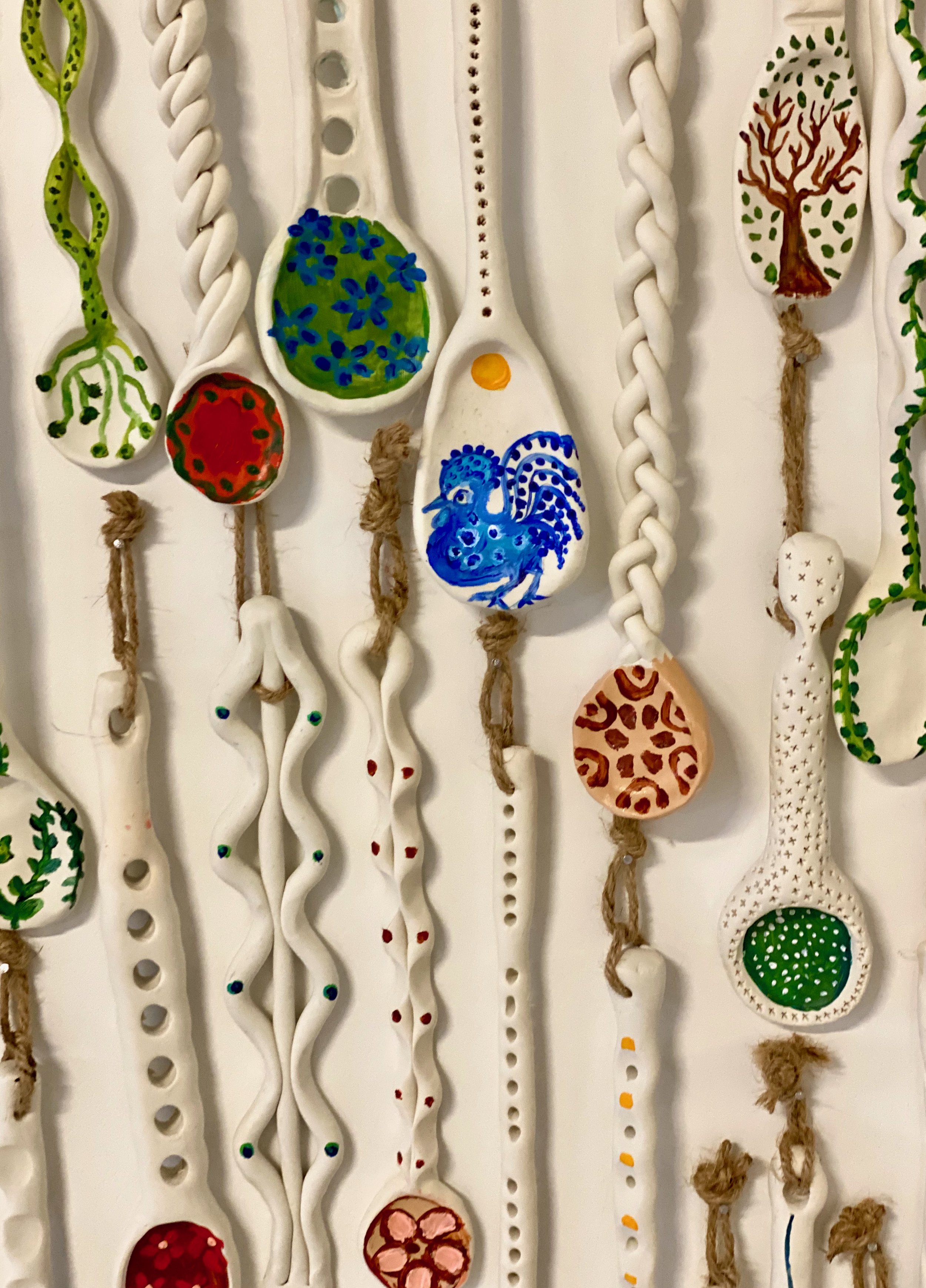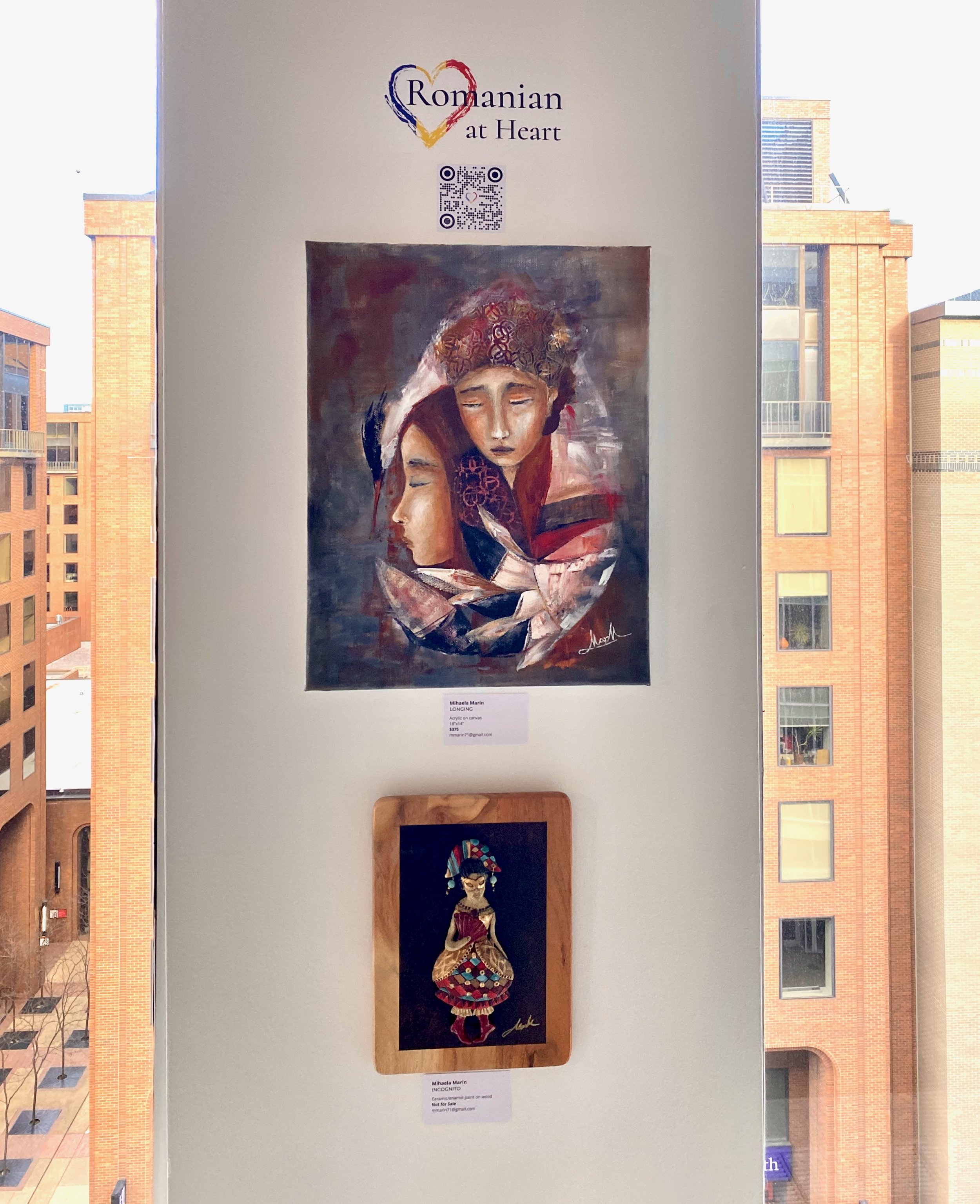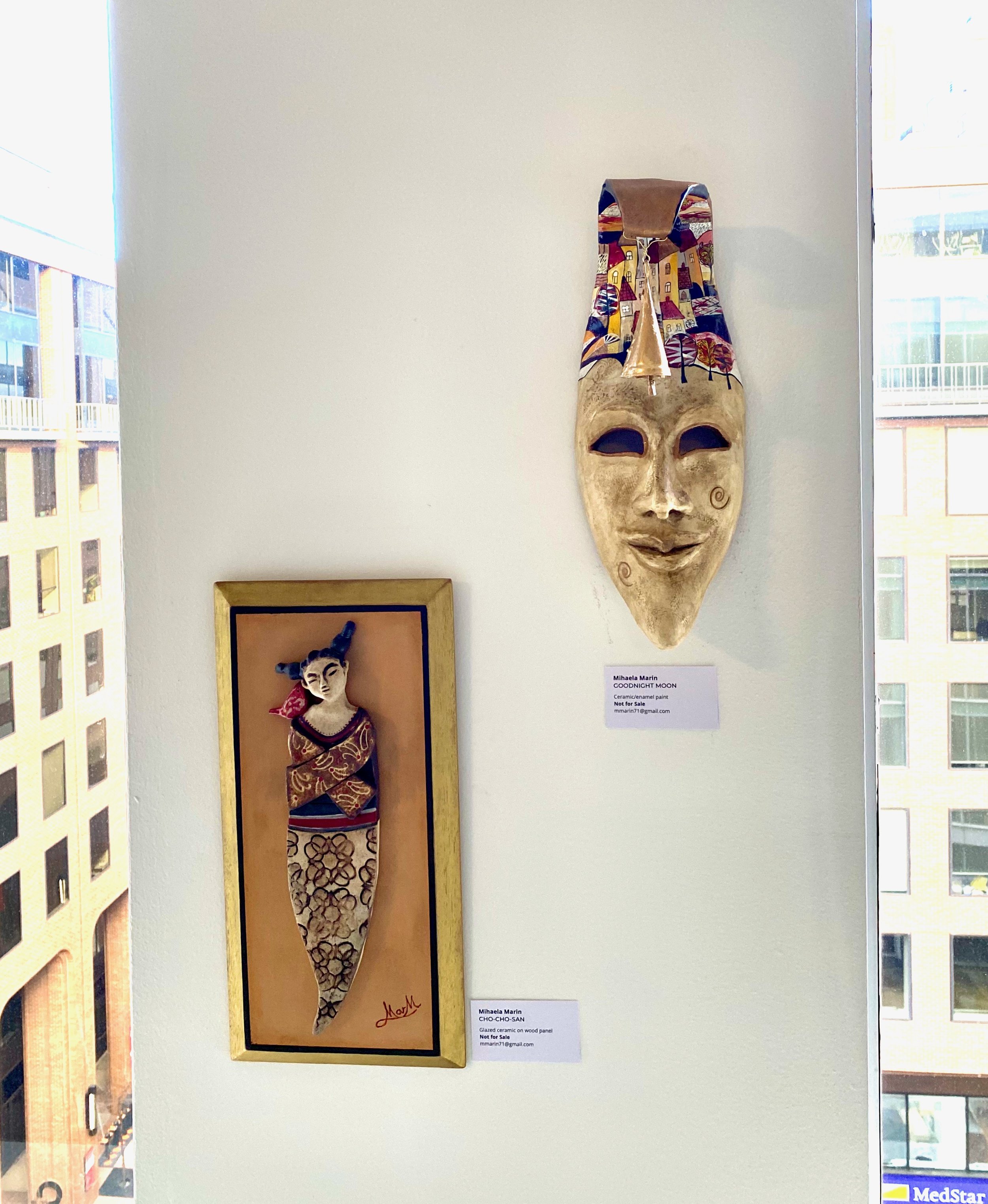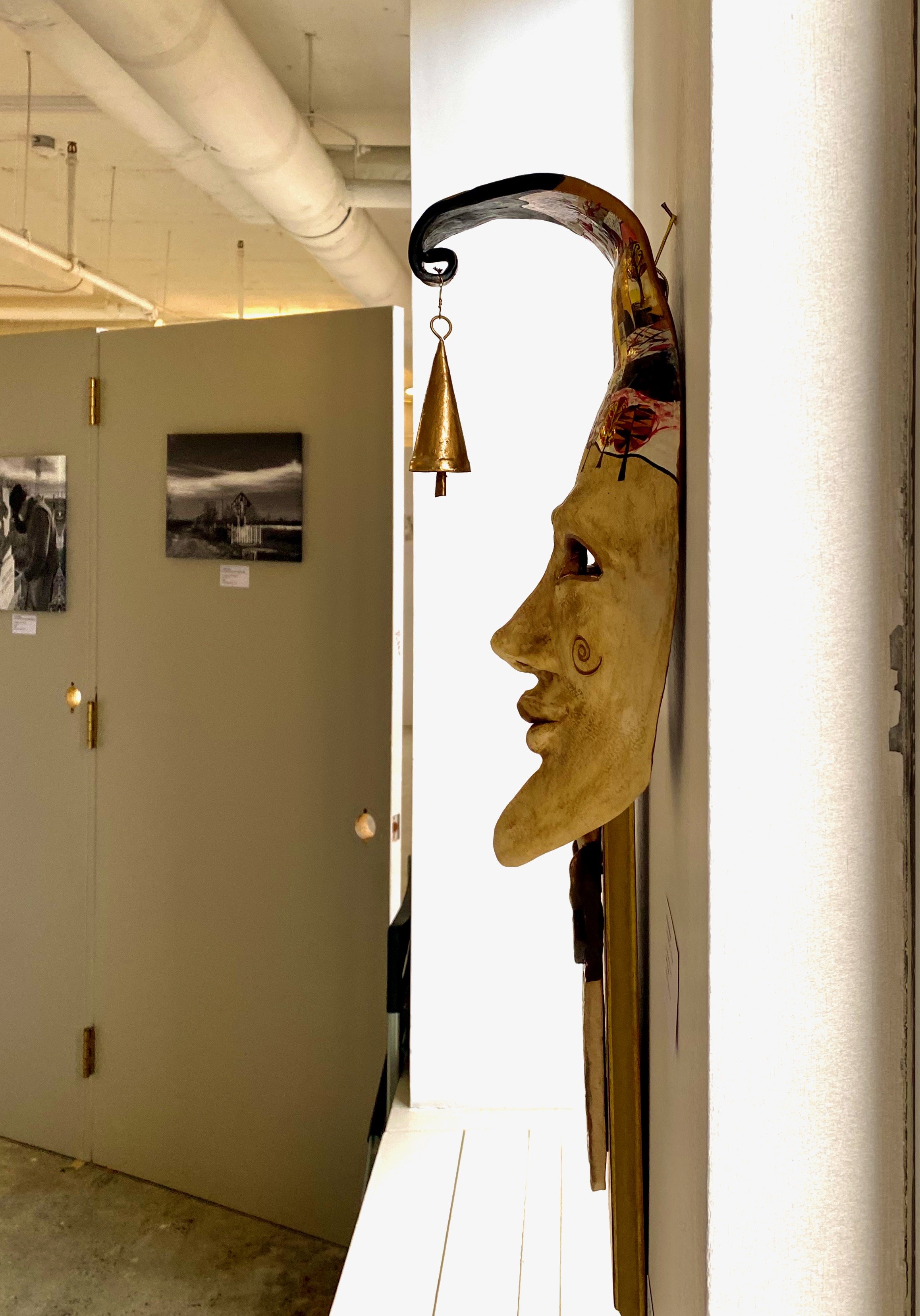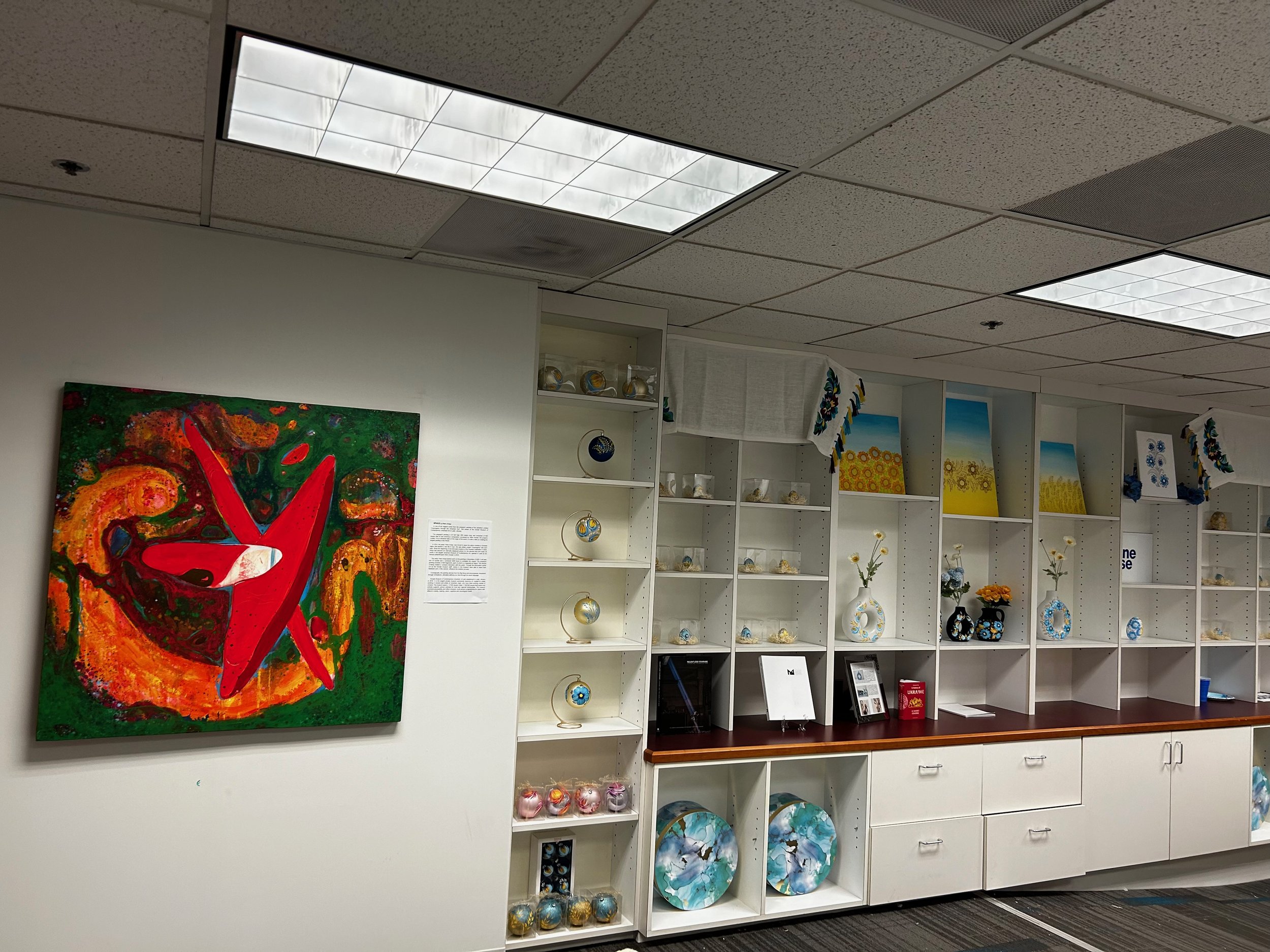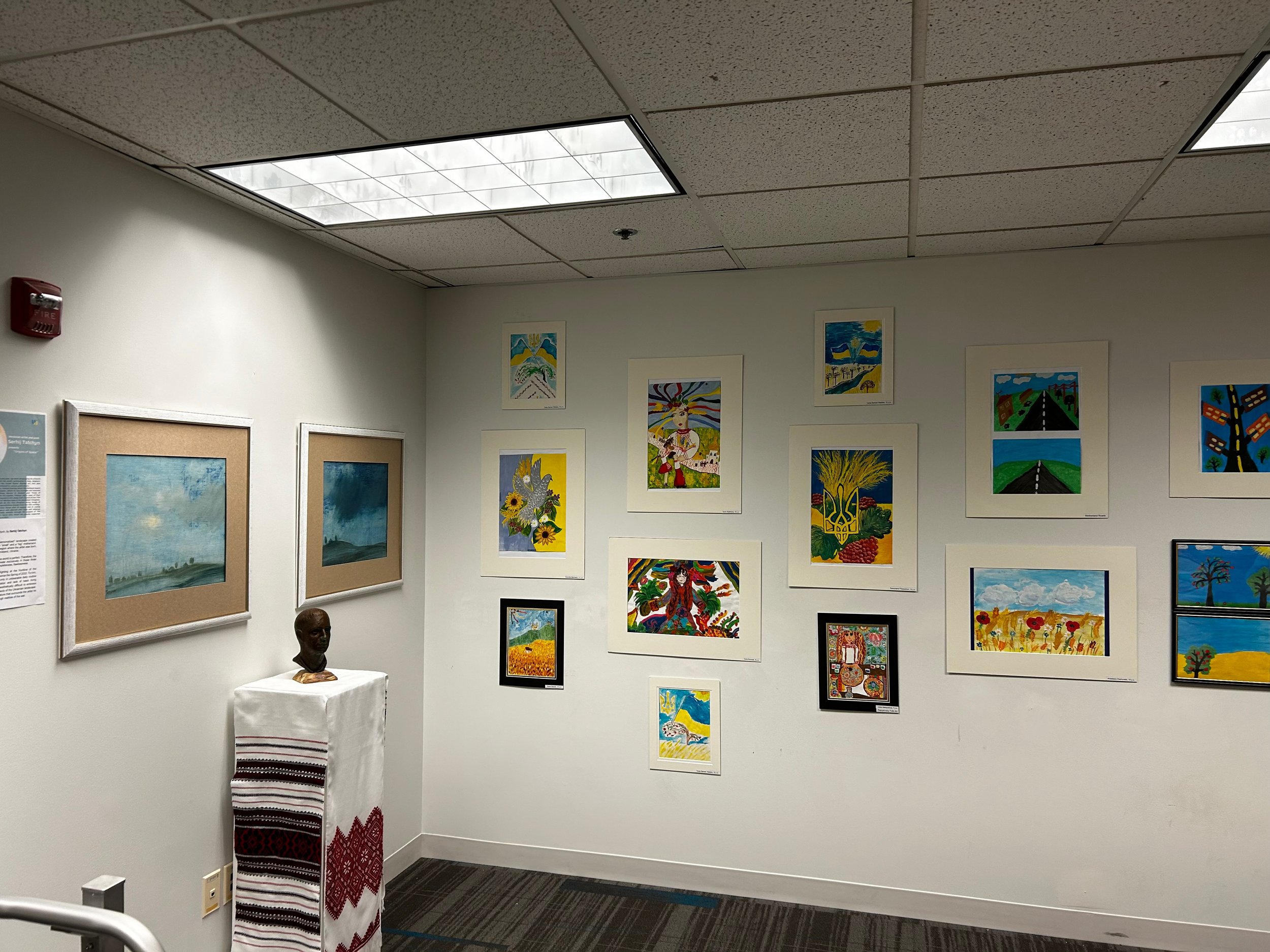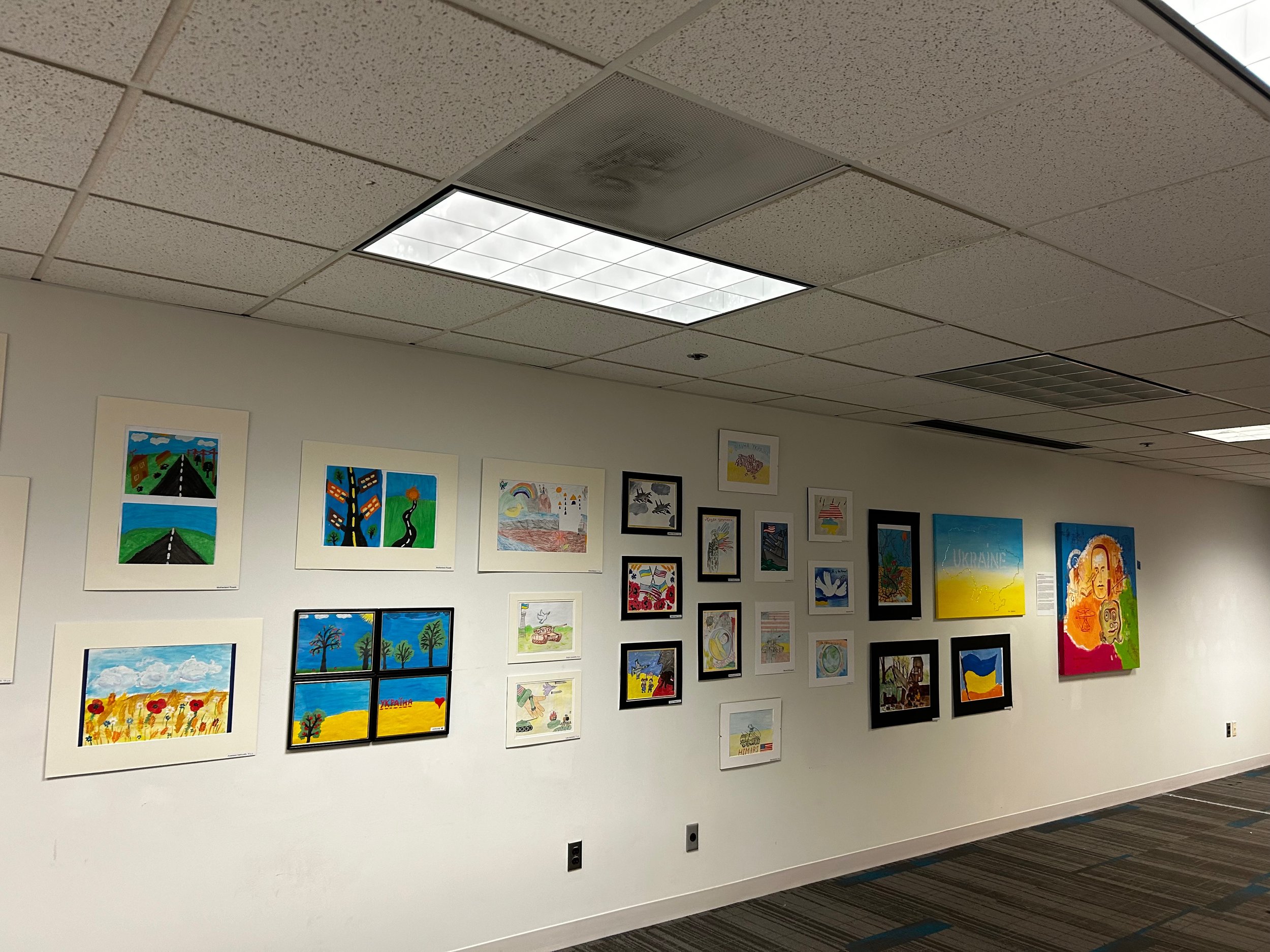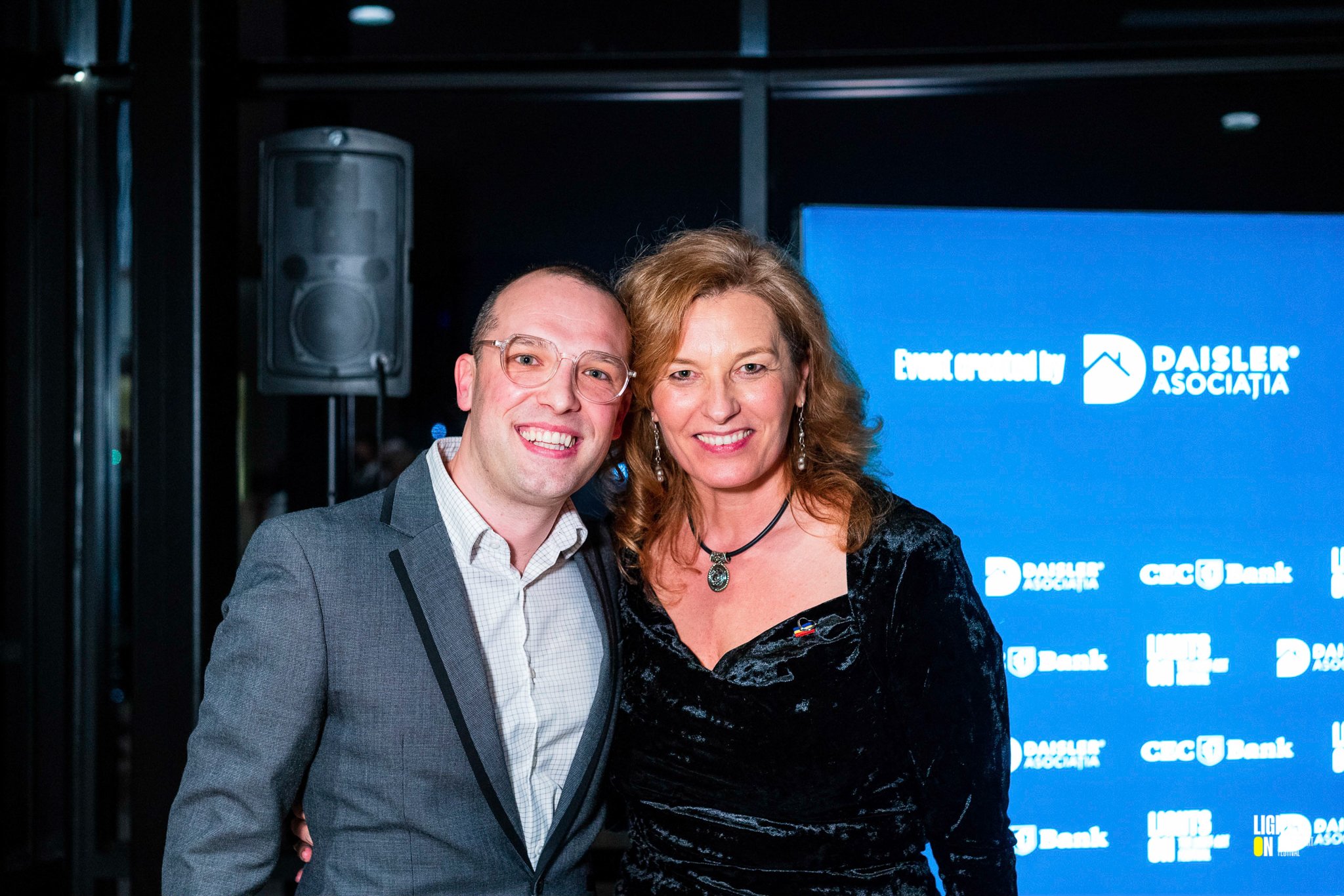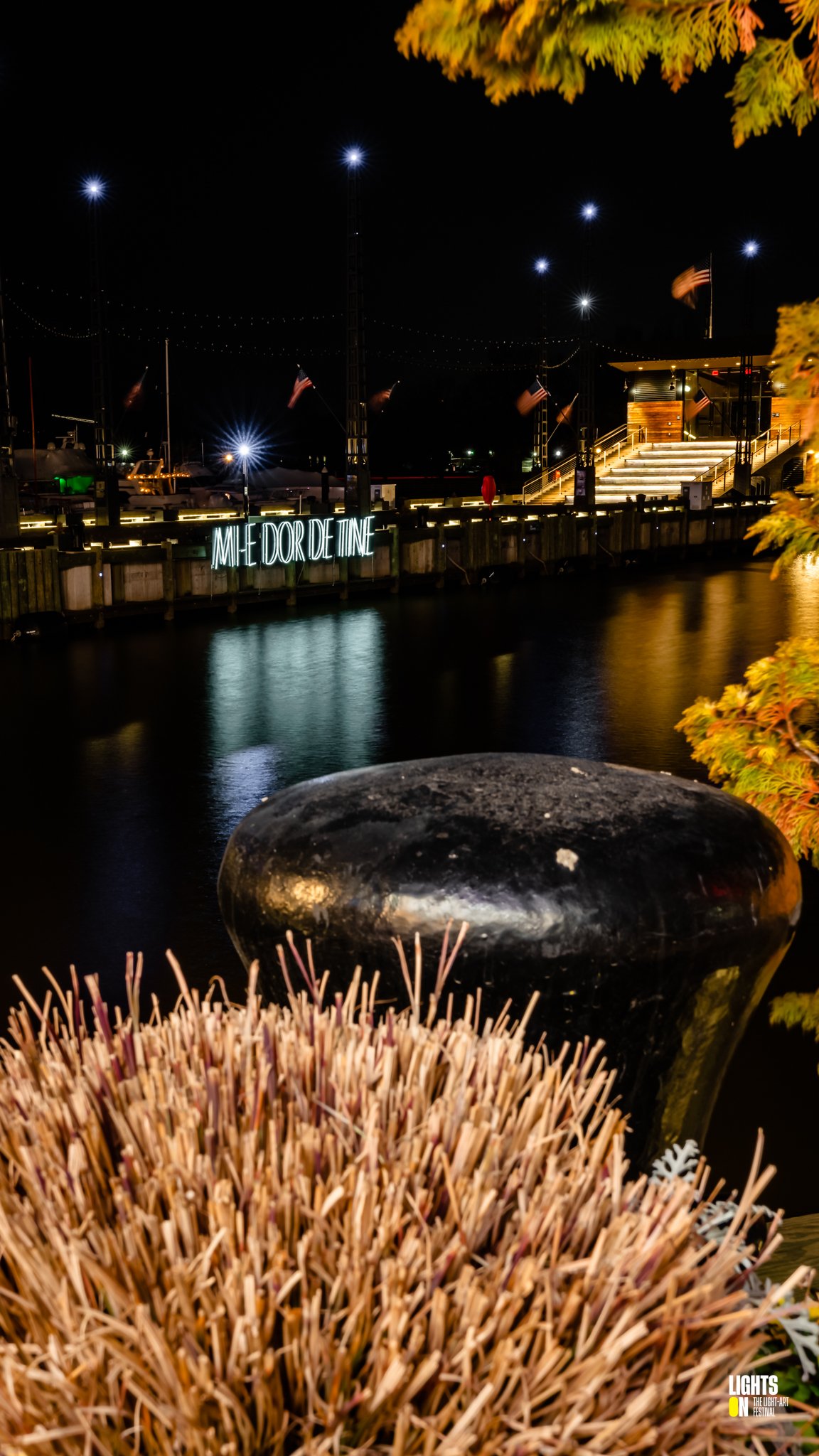“I realized I was hungry to make art and feed my imagination through painting tutorials, discovering artists and their work, teaching myself the harmony of color, and experimenting with new media.” Mihaela Marin, artist
Doina Dascalu in Romanian At Heart exhibit at Artomatic, Washington, DC
In the exhibit, Doina Dascalu presents a poignant portrayal of Romanian history through the iconic Parliament Palace (People’s Palace), commissioned by Nicolae Ceausescu. For me, this architectural marvel symbolizes the daily sacrifices endured by the Romanian people to fulfill the grandiose visions of our communist leaders. As the second-largest building globally, its construction came at a tremendous cost. Doina's photographs offer a revealing glimpse into the intricate architectural elements and lavish materials used, reflecting the turbulent past while also harboring hopes for a brighter future.
I vividly recall my visit to the Palace in the early '90s, guided by one of its architects. Learning about the human sacrifices and extravagant expenses incurred during its construction deeply moved me. It was a poignant reminder of the stark contrast between the opulence of the building and the struggles faced by ordinary Romanians, who often lacked even the most basic necessities.
Doina Dascalu at Meet The Artist event at Artomatic on March 16, 2024
“All our knowledge originates in our perceptions," said Leonardo da Vinci. Science and art are both part of the fabric of life. One speaks to my brain and the other to my soul; I keep both in my heart.
You notice something beautiful every day in nature, hear the music you love, admire a gorgeous sunset you want to keep forever in a photograph, and ask how this is possible: such beauty, so many questions, so much to discover and share.
Yes, I love to share moments of awe, so I take pictures.”
Doina Dascalu
About The Palace of Parliament:
The Palace of Parliament, also known as The House of the Republic or People's Palace, stands proudly in Bucharest, the capital of Romania. Designed and overseen by architect Anca Petrescu and a team of 700 architects, this monumental structure took 13 years to complete. Anca Petrescu, appointed chief architect of the project at 28, led the endeavor after winning a prestigious contest.
With a staggering floor area of 3,930,000 square feet, the Palace of Parliament is the world's third-largest administrative building, following the Pentagon in the United States and the Sappaya-Sapasathan in Thailand. Its neoclassical design and lavish interior spanning 23 sections.
Constructed predominantly from Romanian materials, the palace boasts an impressive array of resources. These include 3,500 tonnes of crystal used for 480 chandeliers, 1,409 ceiling lights and mirrors; 700,000 tonnes of steel and bronze for monumental doors, windows, and ornamental elements; 35,000,000 cubic feet of marble and 32,000,000 cubic feet of domestic wood, such as walnut, oak, sweet cherry, elm, and sycamore maple for parquet flooring and wainscotting, and 2,200,000 square feet of woolen carpets, some of which required unique on-site weaving due to their size. The interior is further embellished with velvet and brocade curtains adorned with silver and gold embroideries and passementeries.
The Palace of Parliament was commissioned by the former Romanian dictator Nicolae Ceaușescu, who intended it to serve as his administrative headquarters and a symbol of his regime's power and grandeur.
As of 2020, the Palace of the Parliament is estimated to be worth €4 billion, solidifying its status as the most expensive administrative building globally.
The exhibit is open until April 28. Come and see us at Artomatic, on 2100 M St NW, Washington, DC, #8 floor.
Wed-Thurs: 5:00PM – 9:30PM
Fri-Sat: 12:00PM – 12:00AM
Sun: 12:00PM – 9:00PM
Mon-Tues: Closed
Pandi Dacu, Daniela Kammrath, Doina Dascalu, Andreia Gliga, Mihaela Marin at the Meet The Artist event on March 16, 2024 at Artomatic, Washington, DC
Andreia Gliga in Romanian At Heart exhibit at Artomatic, Washington, DC
Pandi Dacu Photography In Romanian At Heart exhibit at Artomatic, Washington, DC
Romanian At Heart "Nostalgic" exhibit at Artomatic 25 edition in Washington, DC
In celebration of Artomatic's 25th anniversary, the "Romanian At Heart" collective proudly unveils an exhibition titled "Nostalgic," featuring works of seven talented artists from Eastern Europe, representing the vibrant cultures of Romania, the Republic of Moldova, Bulgaria, and Ukraine. Four talented Romanian artists—Pandi Dacu, Doina Dascalu, Andreia Gliga, and Mihaela (Michelle) Marin—return from our 2017 artshow, bringing with them their latest creations that beautifully capture elements of Romanian history and life. Their latest creations intricately weave together the essence of Romanian history and life, evoking a deep sense of nostalgia and connection.
Joining our talented returning artists are Vasiluta Vasilache from the Republic of Moldova, IraVish from Ukraine, and Kiril Jeliazkov from Bulgaria. Their addition to our collective further enriches the cultural tapestry we aim to present at this iconic DC art show.
Returning to Artomatic after seven years feels like coming home. This time, bringing a diverse array of artists from Eastern Europe will add a unique and captivating dimension to the event, showcasing the richness of our shared heritage and artistic expression.
Pandi Dacu photographs on canvas at Artomatic 25, 8th floor
Pandi Dacu captures candid snapshots of rural life, vividly portraying the raw emotions of her latest visit to a Romanian village. The longing for home is palpable, reminiscent of conversations with village elders that beckon memories of my childhood holidays in rural Romania.
Doina Dascalu photographs on aluminum at Artomatic 25, 8th floor
Doina Dascalu sheds light on an emblematic part of Romanian history with her portrayal of the Parliament Palace (People’s Palace), showcasing the sacrifices made by the Romanian people to realize the dreams of communist leaders. Her revealing pictures offer a glimpse into the intricate architectural details of a tumultuous past, echoing hopes for a brighter future.
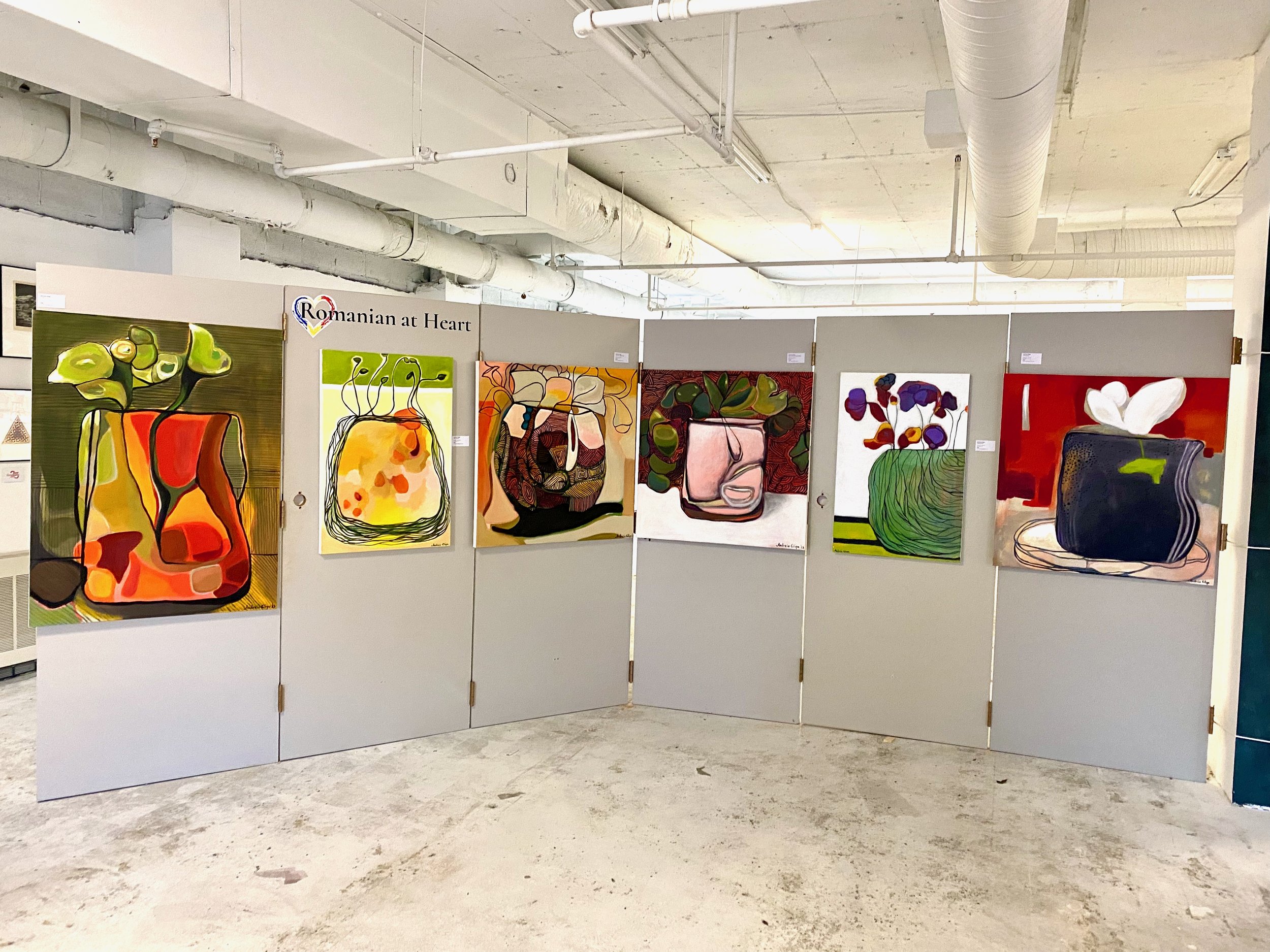
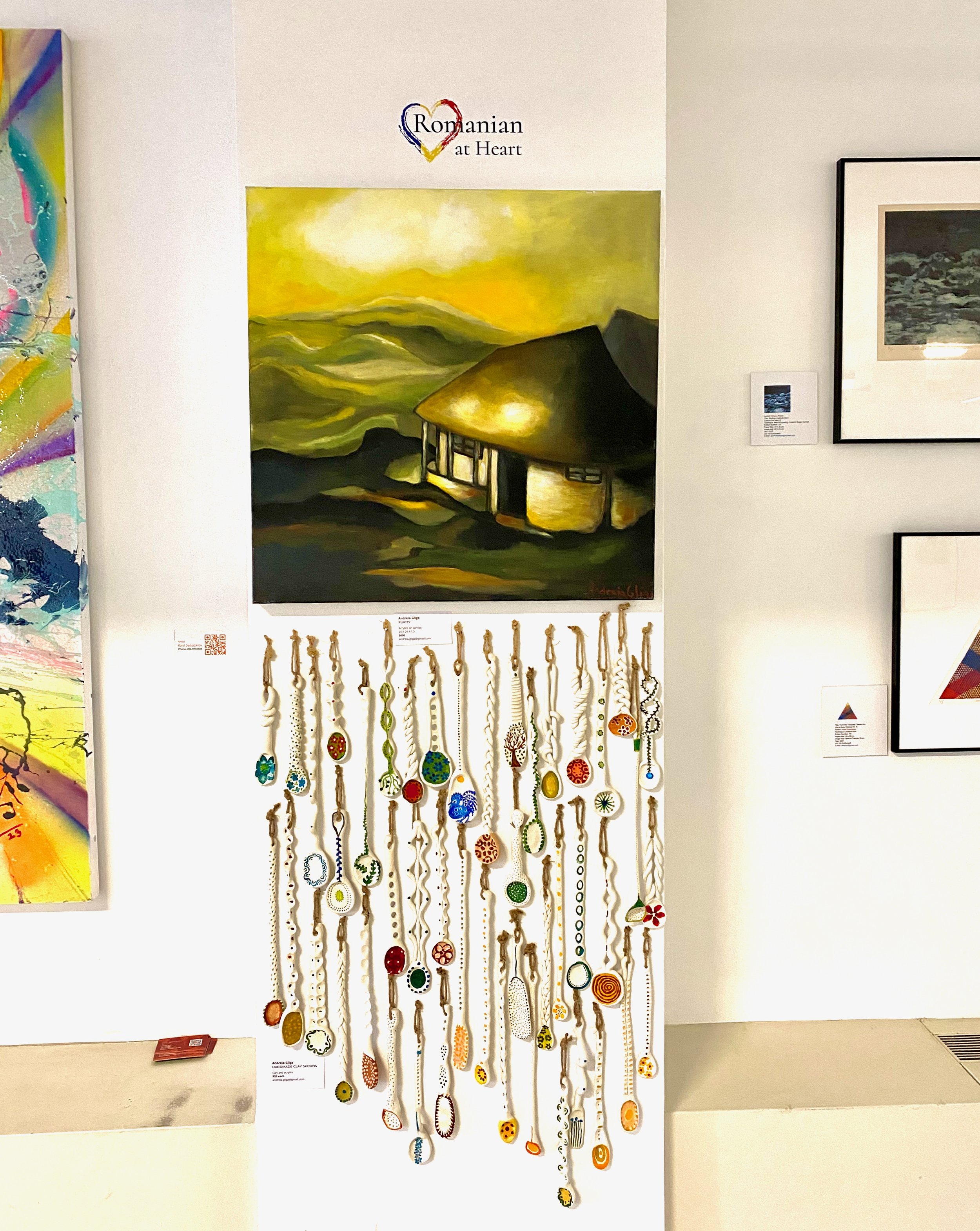
Andreia Gliga brings nature and tradition to life, complementing visitors' emotional journeys with clay spoons adorned with Romanian symbols and vibrant botanical paintings celebrating the spirit of Spring.
Mihaela (Michelle) Marin's art invokes joy and a connection to one's inner child with themes, colors, and shapes that inspire playfulness amidst tranquility.
Vasiluta Vasilache paintings on canvas, Artomatic 25, 8th floor
Vasiluta Vasilache's extensive, vibrant paintings, part of her 'Healing Plants' series, reflect her boundless creativity and optimism, starkly contrasting my memories of '90s Chisinau. (Republic of Moldova).
IraVish painting on kilim, Artomatic25, 8th floor
IraVish (Irina Vishnevskaia) (Ukraine) shares a unique piece from the series of paintings on kilim, "Dreams of my Childhood," which aim to preserve the beauty and customs of the Gagauz nation. Her homespun carpets, painted in romantic primitivism, tell stories of tradition and heritage.
Kiril Jeliazkov pantings on canvas, Artomatic25, 8th floor
Kiril Jeliazkov's abstract canvases, born from his belief that art belongs to all and nature is the perfect gallery, use color to evoke emotions and sculpt chaos into harmony. (Bulgaria)
I look forward to seeing you all at the exhibit on the 8th floor.
Don't miss our Meet The Artist Event on Saturday, March 16th, between 4:30 pm and 6:30 pm on the 8th floor.
Part of our efforts was to bring artists represented by the Ukraine House in DC; their work is shown in room #7001 on the 7th floor: Serhij Tatchyn, Petro Antyp, and Nina Shostakovska, as well as drawings from children.
I want to give special thanks to Maxim Anmeghichean, Republic of Moldova Ambassador H.E. Viorel Ursu, Oleksandra Sienik and Marianna Falkova from Ukraine House, Kateryna Smagliy from the Ukraine Embassy, Ella Mirevski, my partner Cris Ianculescu, James Albright, George Koch, and the team at Artomatic for their invaluable support.
Enjoy the show!
Daniela Kammrath
Curator, Founder Romanian At Heart
About Artomatic:
The 25th Anniversary event starts Friday, March 8th at 12 pm and runs to Sunday, April 28th.
Full event days and hours are:
WED-THURS | 5:00 PM - 9:30 PM
FRI-SAT | 12:00 PM - 12:00 AM
SUN | 12:00 PM - 9:00 PM
MON-TUES | CLOSED
Address: 2100 M. St. NW, Washington, D.C.
Andi Daiszler and his quest for touching Romanians' and Romanian Diaspora's hearts
Washington DC, The Wharf, February 16, 2022
I’ve met Andi in the Fall of 2020, during my tenure as Executive Director of Romanian United Fund. We were working at the time on bringing the ‘Mi-E Dor De Tine’ light art installation to Chicago, its first exhibit in the United States. The team working on the project was spread on three time zones, Midwest, East Coast, Romanian time, on two continents. Andi’s enthusiasm has been the driving force for this project to happen and thrive. After him and I worked together to bring the installation to Washington DC, I asked Andi to virtually ‘sit down’ with me and share his thoughts for the Romanian At Heart readers.
Daniela Kammrath: How did you come up with the idea for this project, Mi-E Dor De Tine?
Andi Daiszler: MI-E DOR DE TINE is the signature artwork created by the Daisler Association for the Lights On Romania light-art festival. We call it a signature artwork because in some form it exists in every project we are handling with the Daisler Association and it is one of our trademarks. The first time MI-E DOR DE TINE was on, people stopped and took pictures of it, pictures that they sent to their loved ones. That is how we understood that it needs to travel and be on display away from Romania so that it comforts those who long for their loved ones.
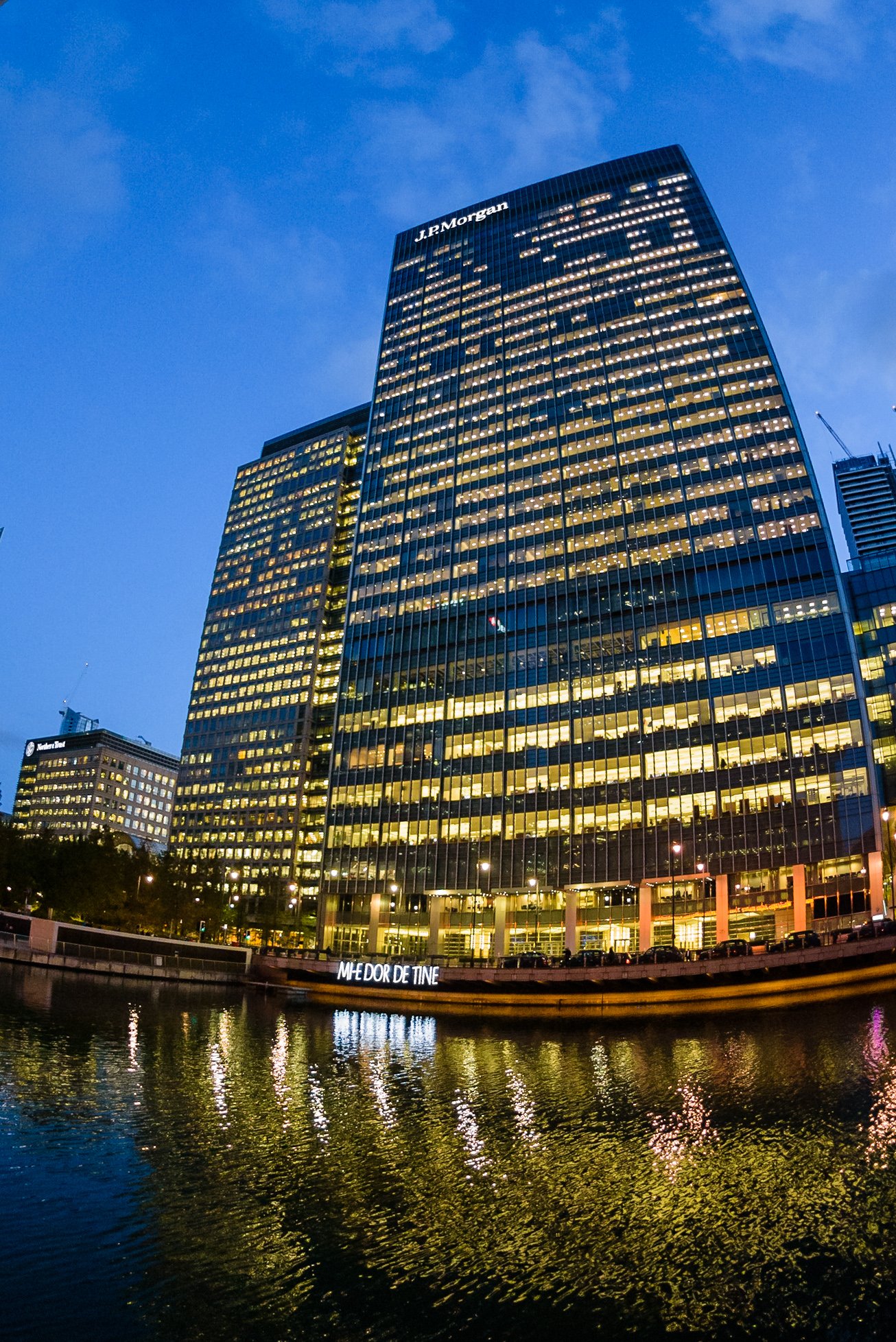
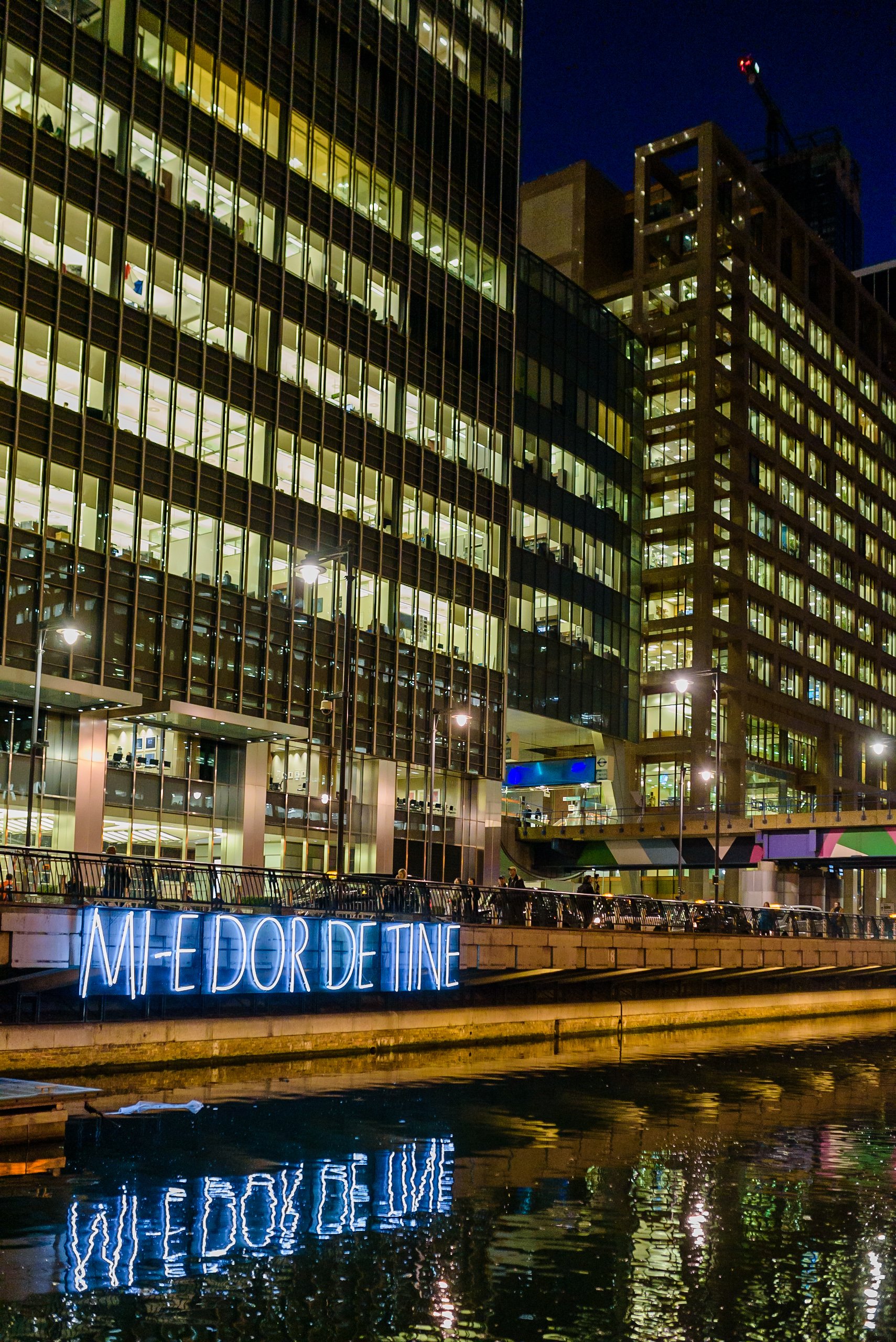
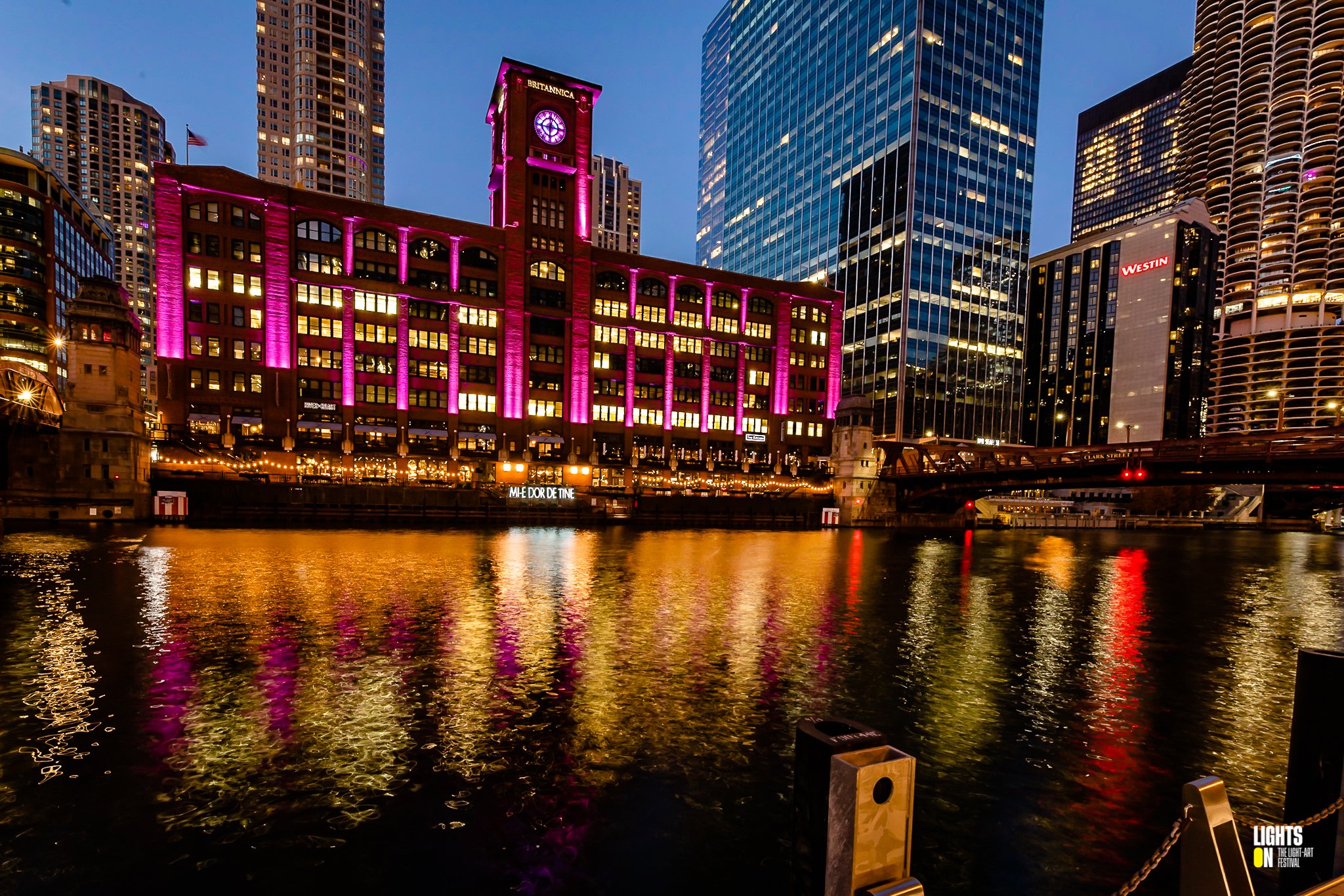


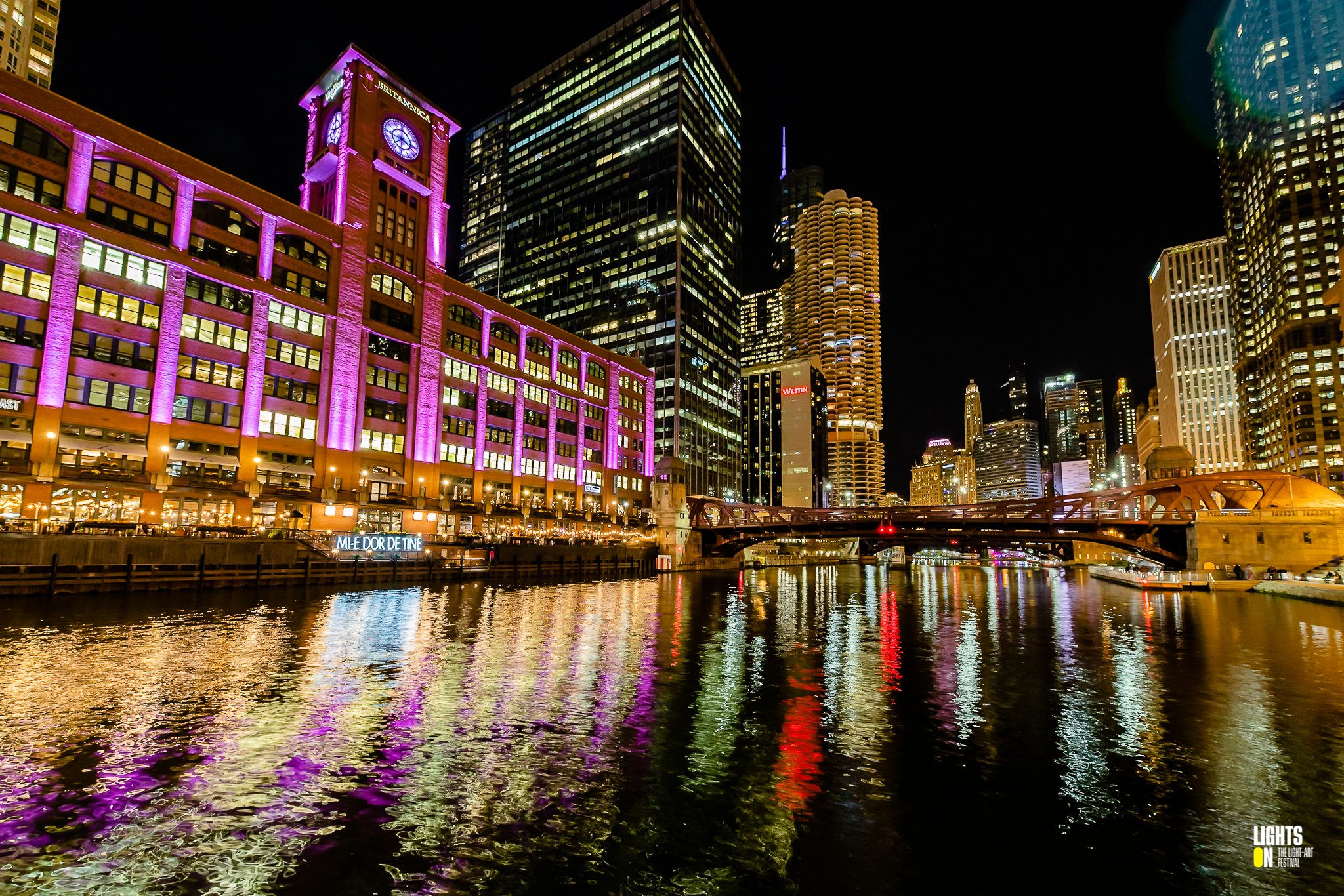

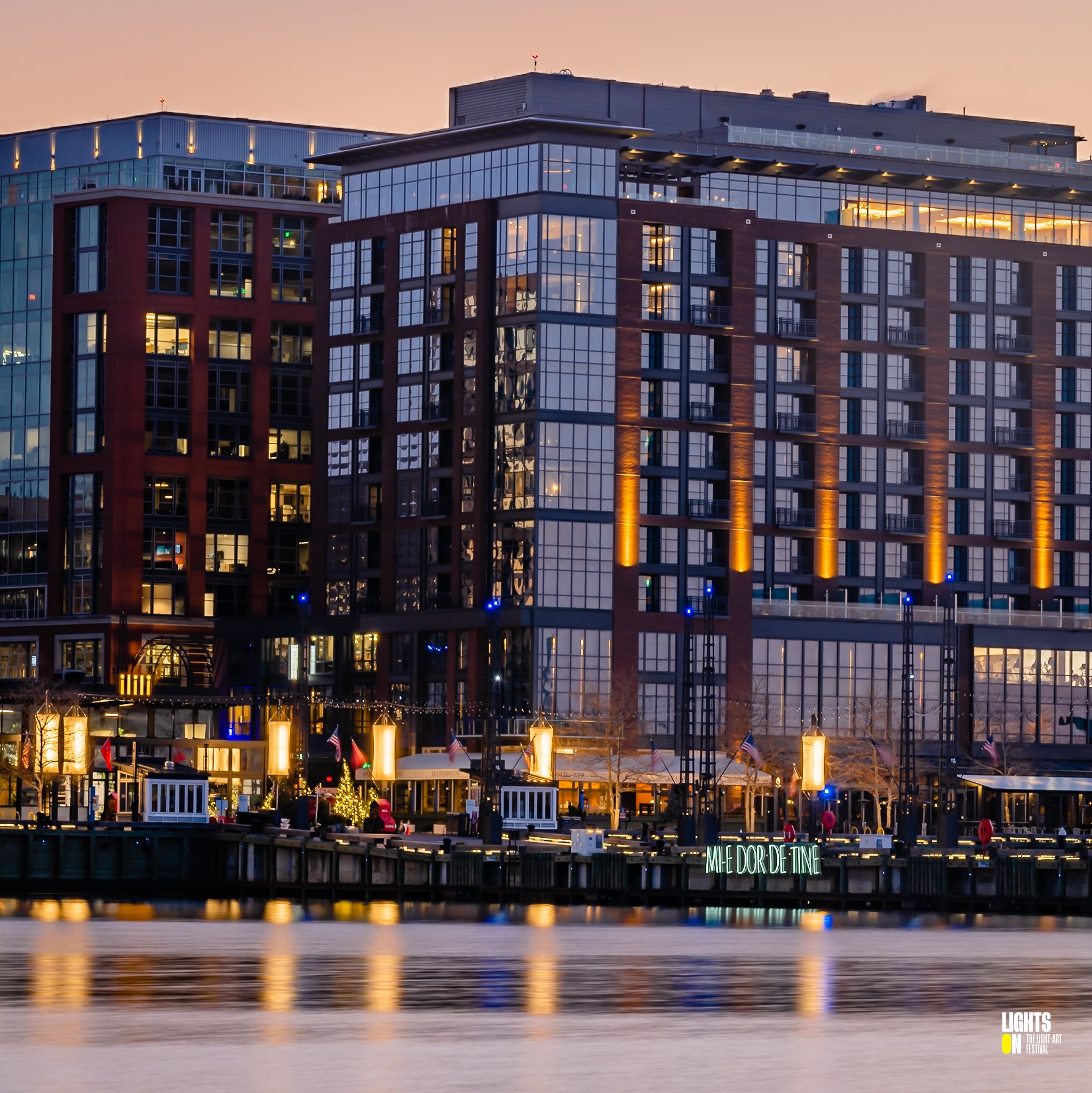
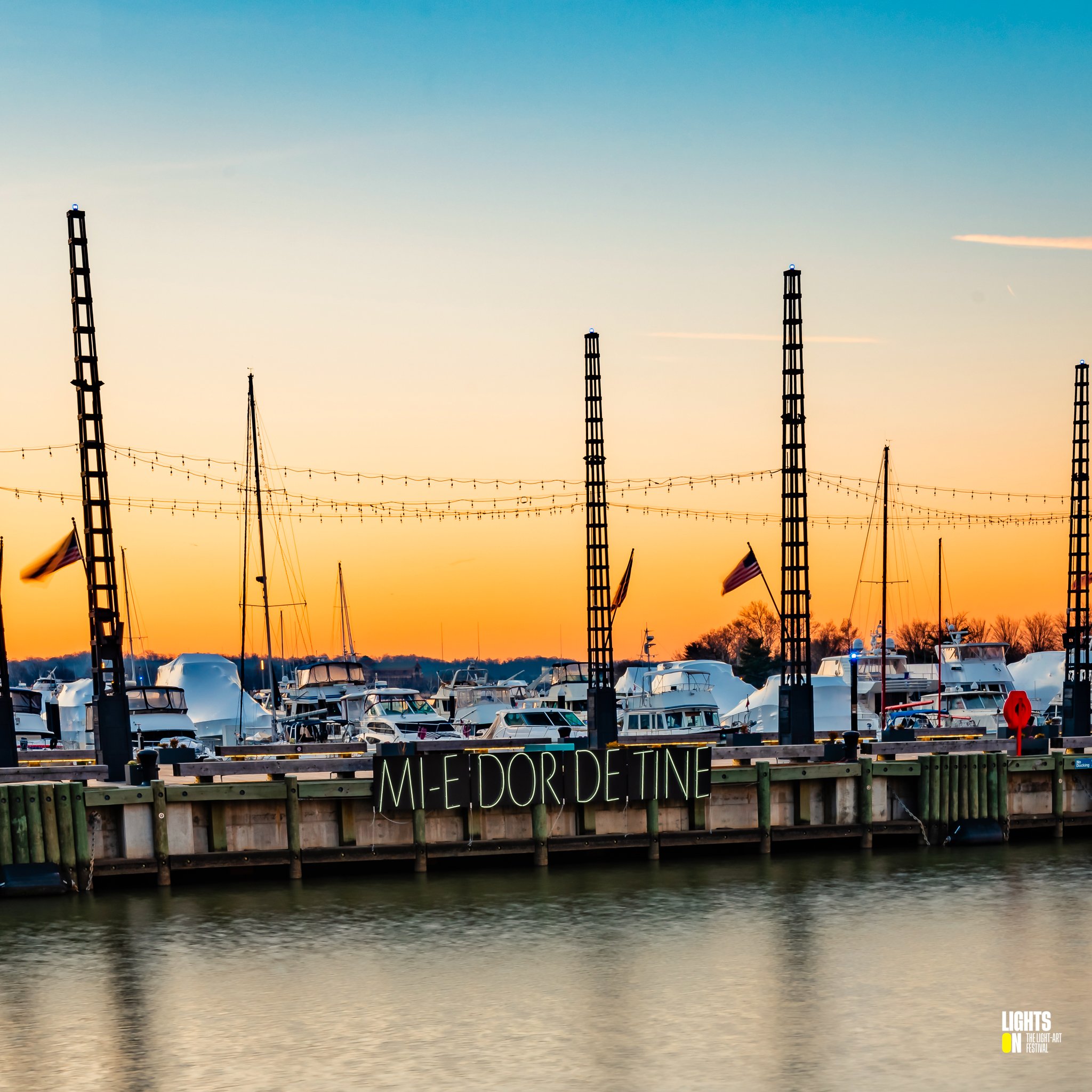
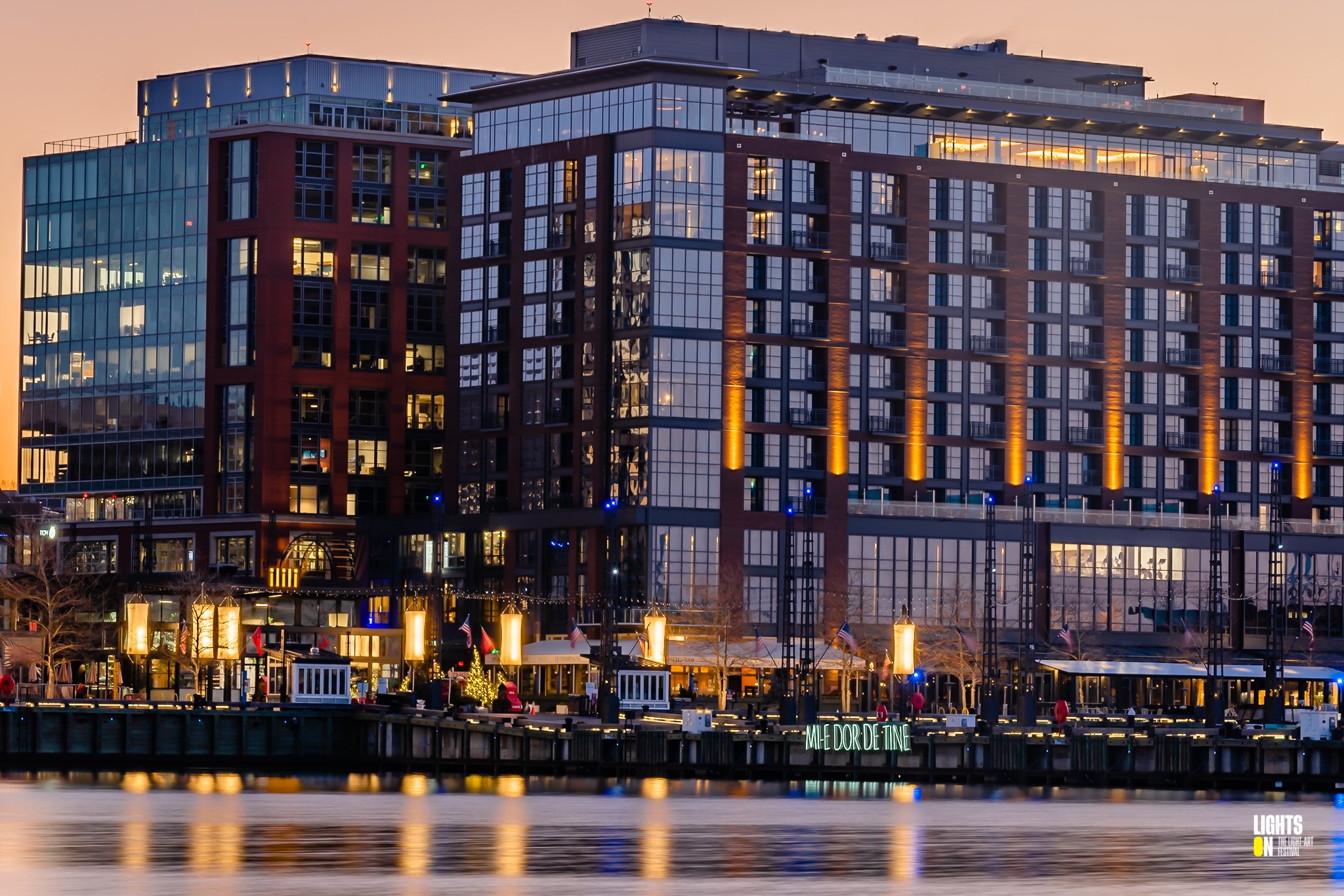
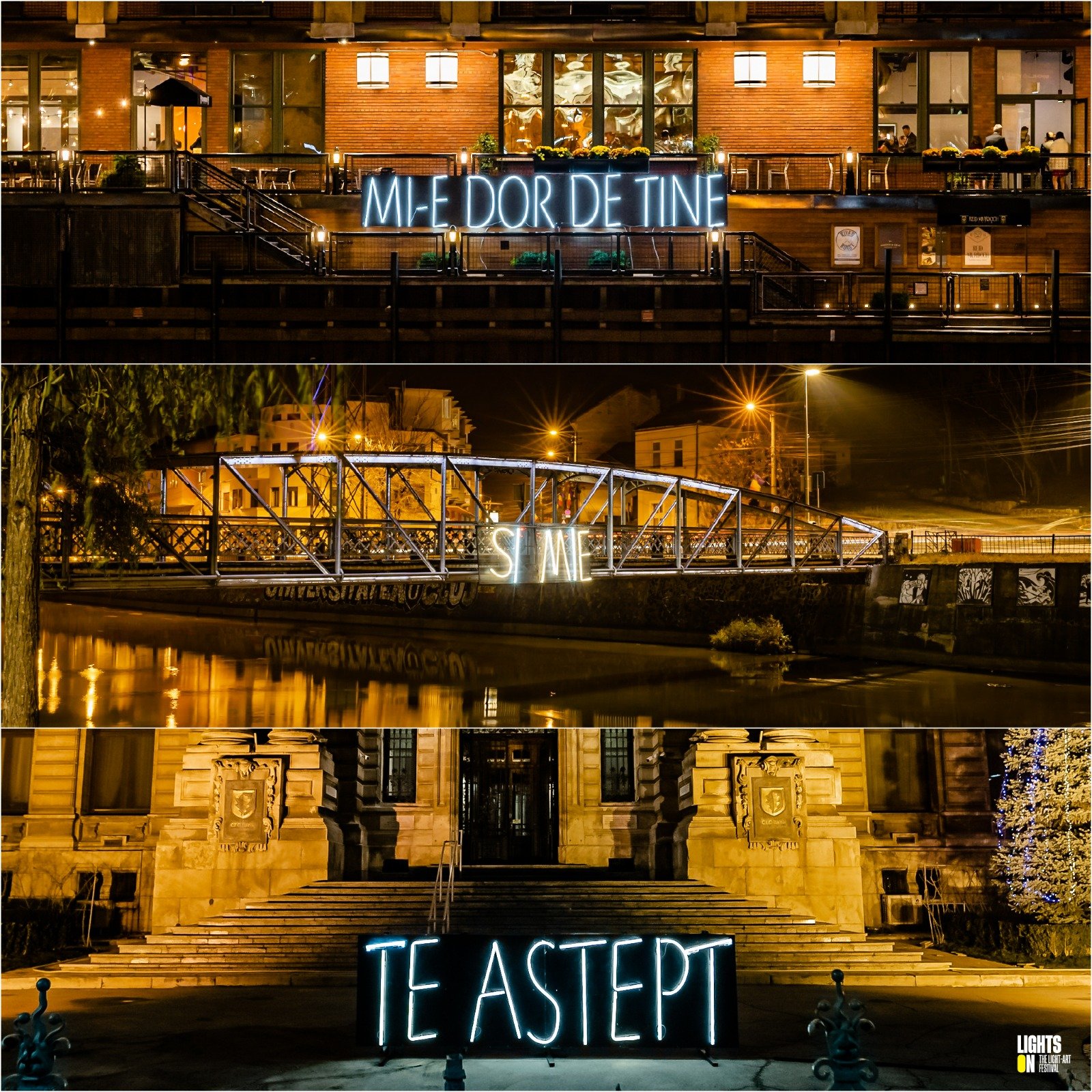
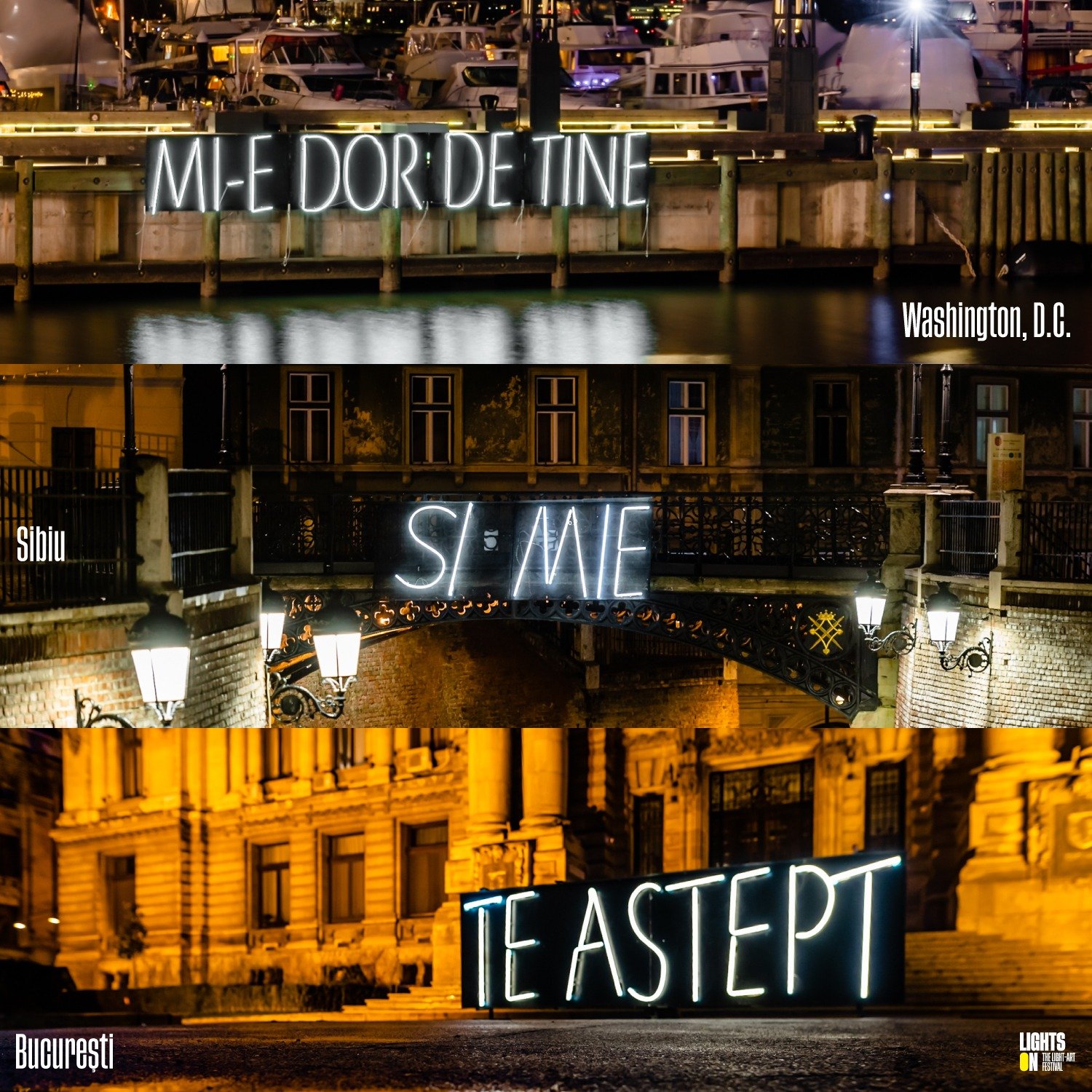
D.K. What made you go with it to London? Chicago? DC?
A.D.: London was the first destination outside the Romanian borders. Dani Popescu, our artistic director, had a friend organizing the Canary Wharf Winter Lights festival and that is how we approached the project the first time. London has about 300.000 Romanians living in its neighborhoods, so we knew from the start that we wanted to target a large Romanian destination. Chicago came naturally, one of our friends suggested it and connected us with the people from Romanian United Fund. After Chicago, I started talking with you about how crazy it would be to have MI-E DOR DE TINE in Washington D.C. in less than 3 months from the Chicago exhibition. And it was crazy but totally doable and we are glad that we made it here.
Andi & Anca Daiszler , Washington, DC, February 16, 2022
D.K. How is the Romanian Diaspora seen from back home, in Romania?
A.D.: I think that this question has multiple answers depending on who you ask. For those that have loved ones, the Romanian Diaspora has a name, a face, something to miss, and so on. For those seeking to be elected every 4 years, the Romanian Diaspora is a force that cannot be neglected, with almost 25% of the population of Romania currently living abroad. For others, sometimes, the Romanian diaspora represents the people making the news in a very unpleasant way. These are all true and you have to understand the size of the Romanian diaspora in terms before casting any judgment. One thing that has always struck me in regards to the Romanian diaspora is the way they blend in with the local population and adapt to each nation's specifics, be it in Sweden, the United States, or Italy. I found this as a way of natural camouflage because as soon as you leave the Romanian borders, I think it will be very hard to locate the Romanian communities from abroad, not having Community Centers or strong visibility elsewhere.
D.K.: What do you believe is the biggest contribution to Romania that we, the diaspora, could have?
A.D.: I think that everyone should travel outside the Romanian borders at least once in their lifetime, even if it's just for a couple of days. The mere sight of other cities, of other developments made elsewhere, is a transformational experience, one that would allow everyone to understand what progress is all about. Afterward, I would encourage those that can return and help shape the future of Romania. The western way of thinking is the biggest contribution the Romanian diaspora can bring back home, but it needs to be implemented in Romania, therefore some need to come back home.
D.K.: Share with us some of the other projects you’ve worked on with Daisler Association until now.
A.D.: The Daisler Association has the habit of focusing on projects dedicated to the urban landscape around us. We do a very chic Flower Market as a street delivery type of project called Strada Potaissa which won last year the prize for the best community-run project in Cluj. Strada Potaissa is dedicated to reinvigorating a street that is very close to downtown Cluj-Napoca, a street that is often dirty and filled with garbage. We clean it every year and turn it into the biggest street celebration in Cluj.
Another project by the Daisler Association is the Green Center (Centrul Verde). It aims to explain and facilitate the transformation of a certain part of Cluj-Napoca into a western-looking street by giving free flowers to people living on those streets.
The third project is the Blue Monday project, which tries to set up support groups led by psychologists in Cluj-Napoca. This is a first because in Cluj there aren't really support groups for people wanting to meet with other people that go through the same
Next is of course the Lights On Romania project, our biggest one so far. This is a light festival that tries to showcase state-of-the-art works from Romanian and foreign artists in a movement to convert Romanian cities into large outdoor art galleries. Normally we would have about several tens of thousands of people attend an exhibition or a hundred thousand attend a festival edition. We had the first edition in Bucharest in December 2021, right now we are working for the next edition to take place in Cluj and Bucharest together.
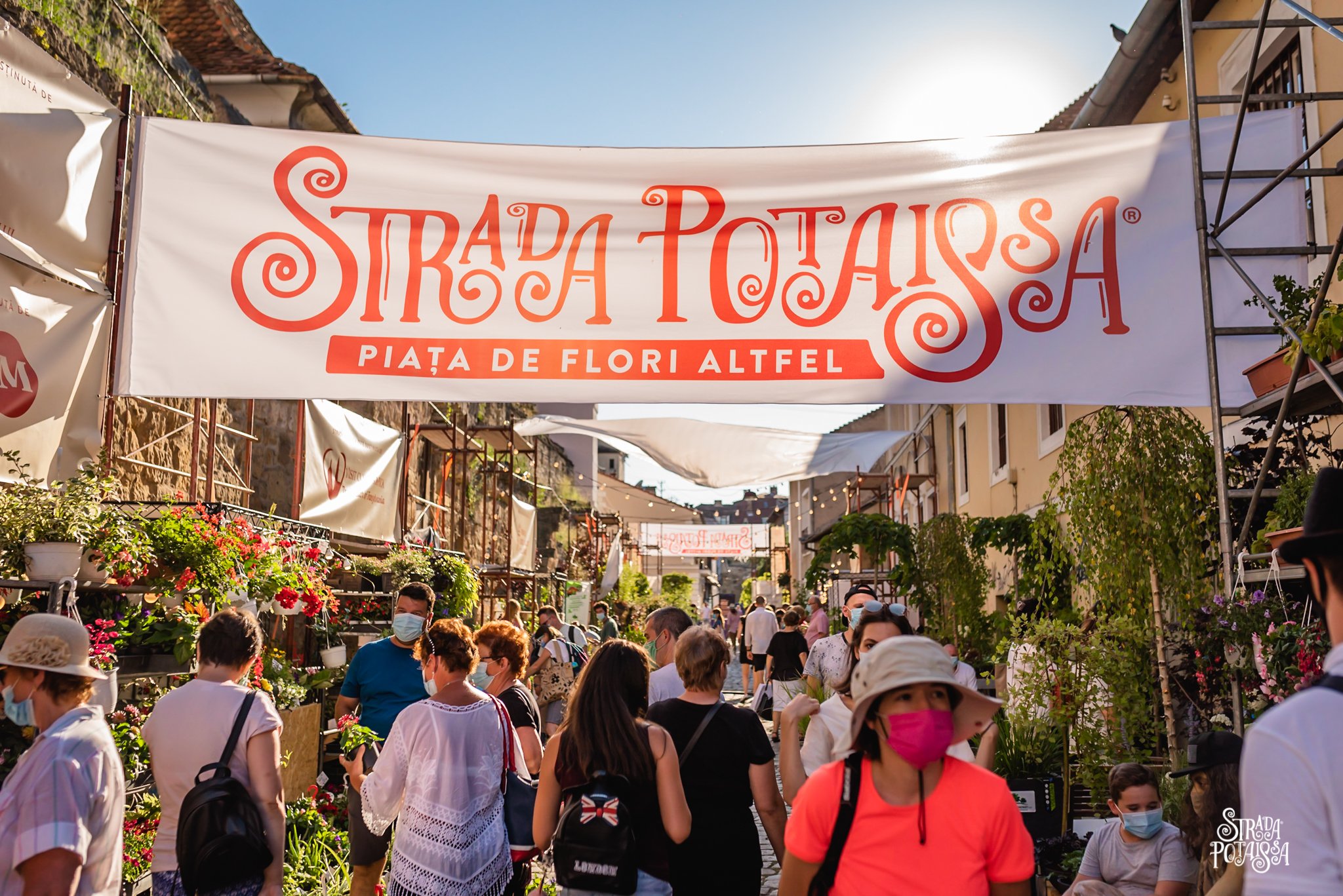
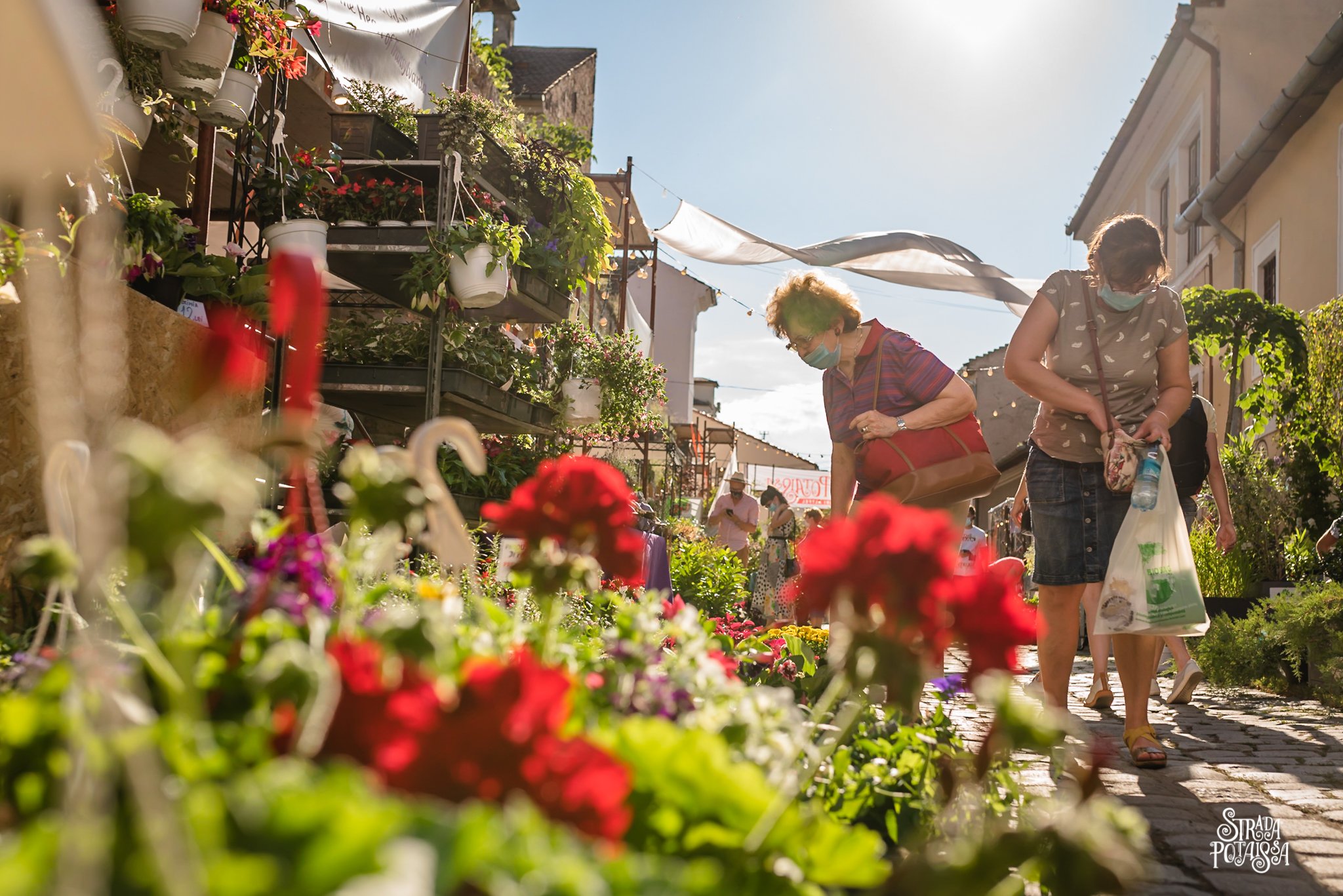
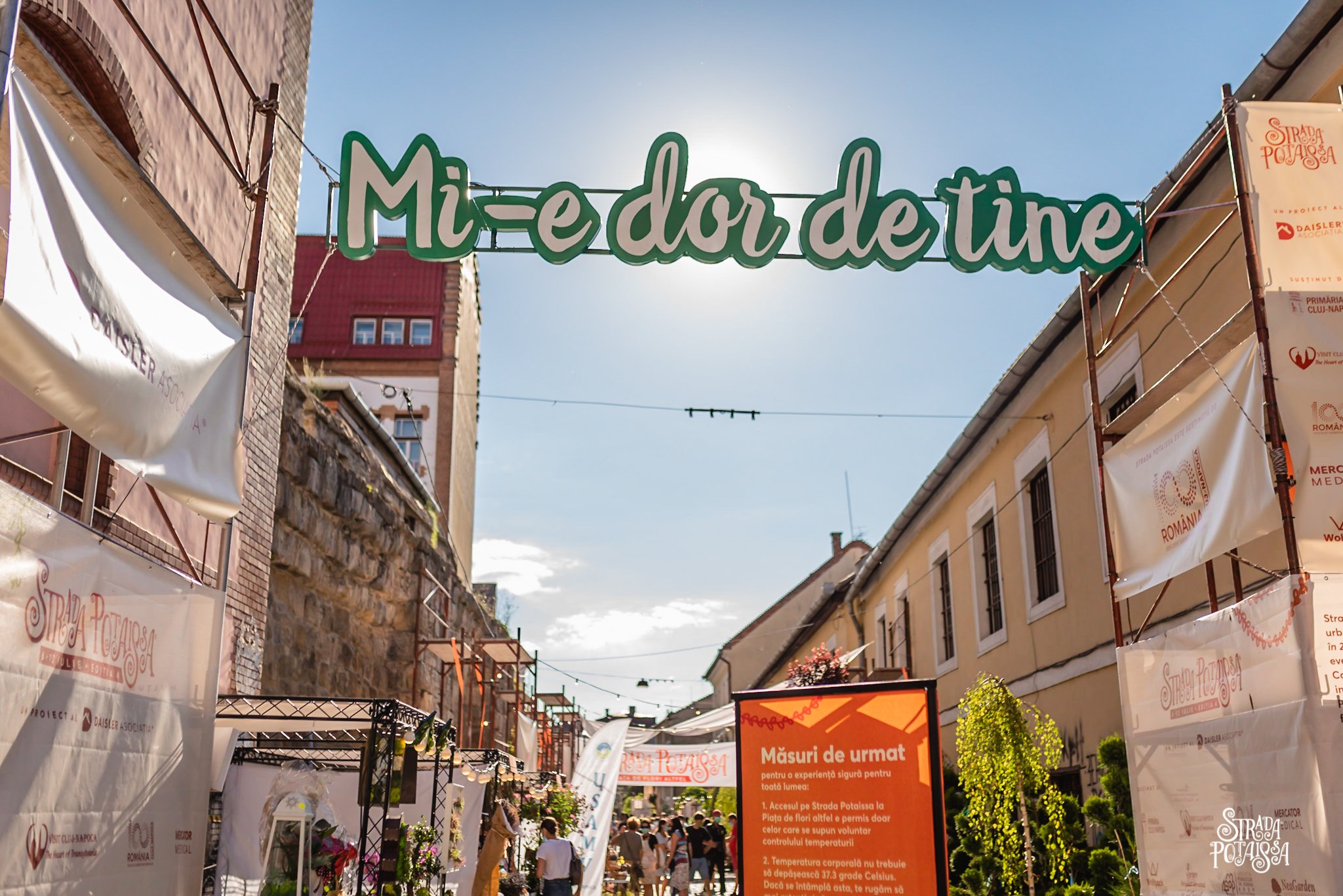
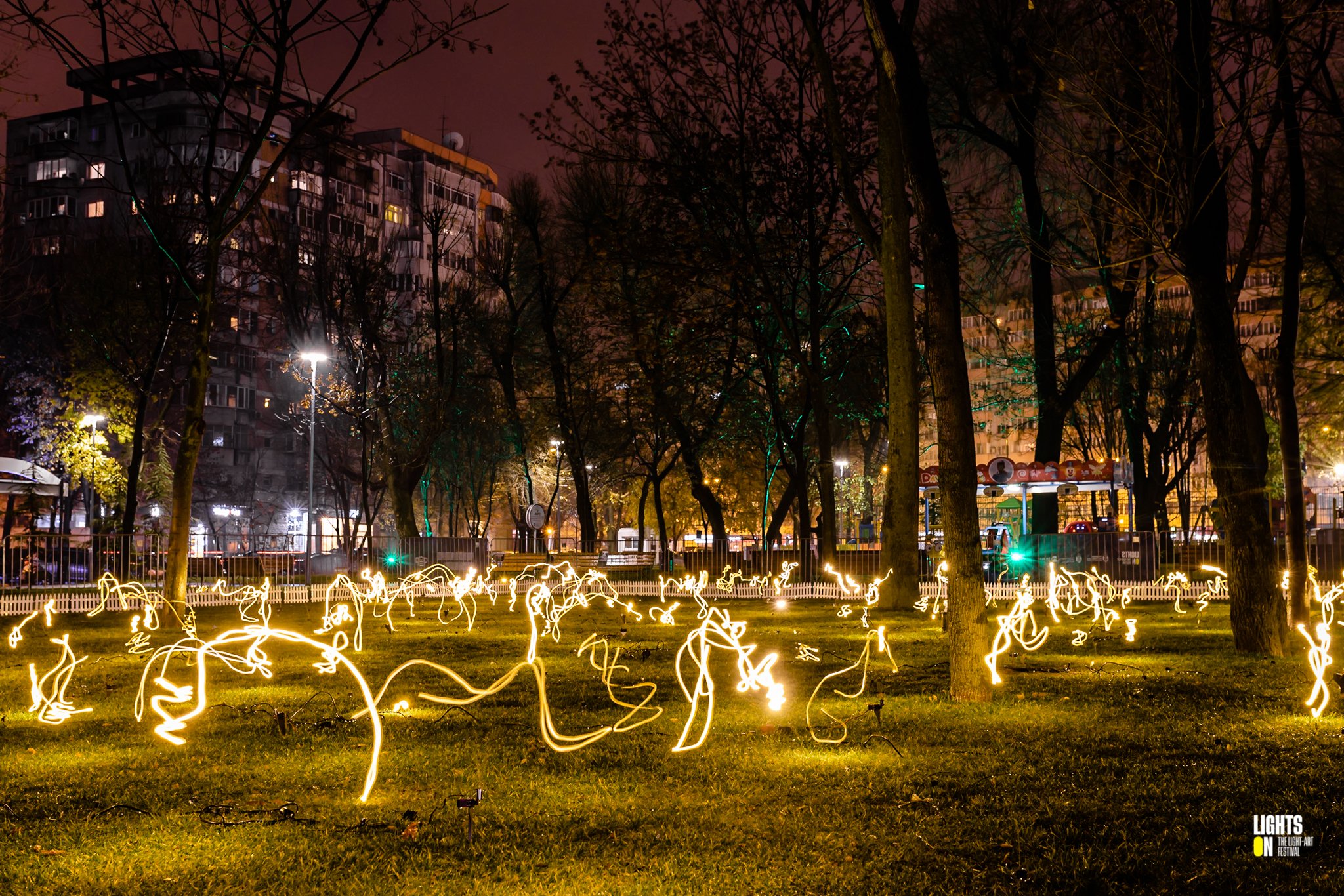
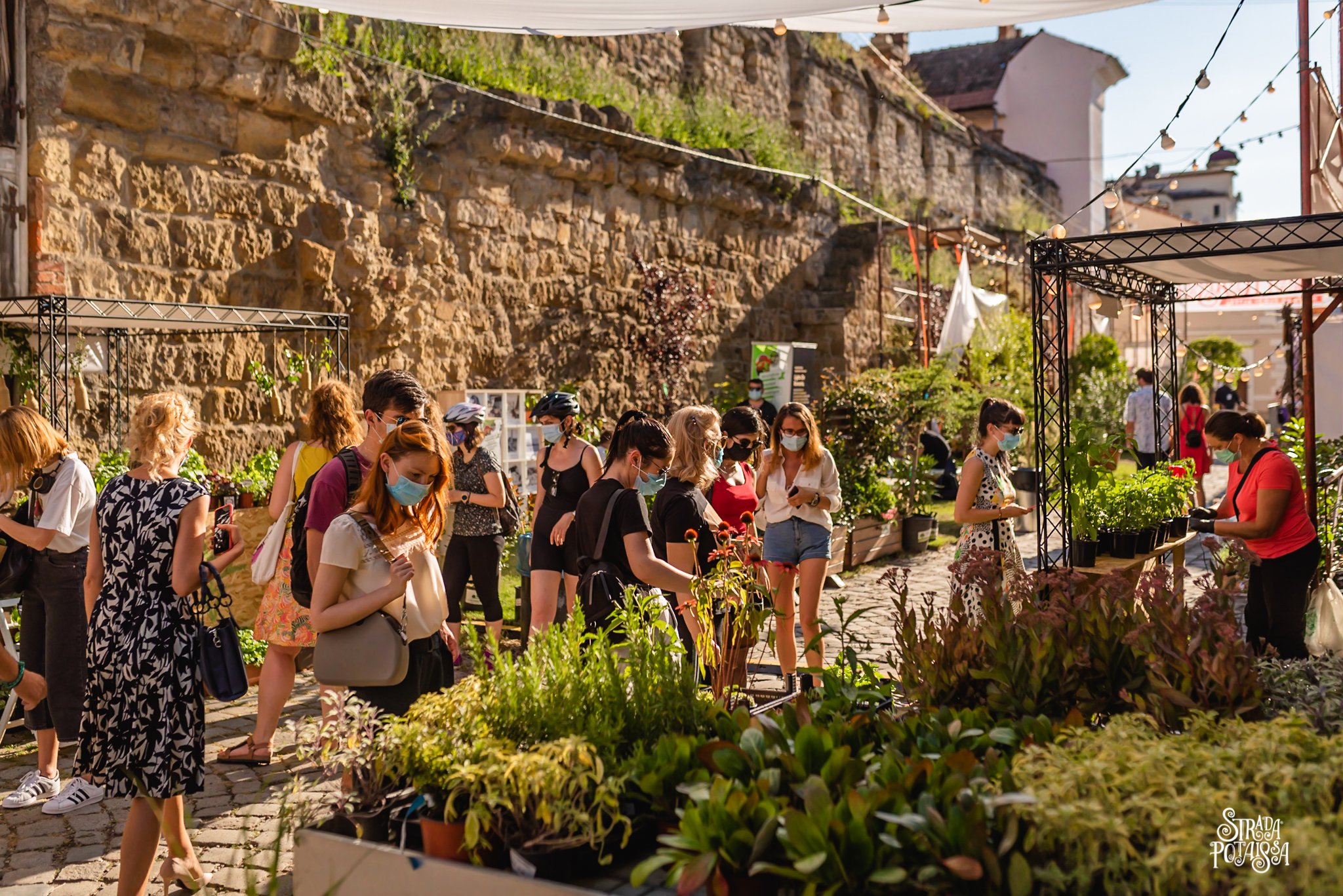
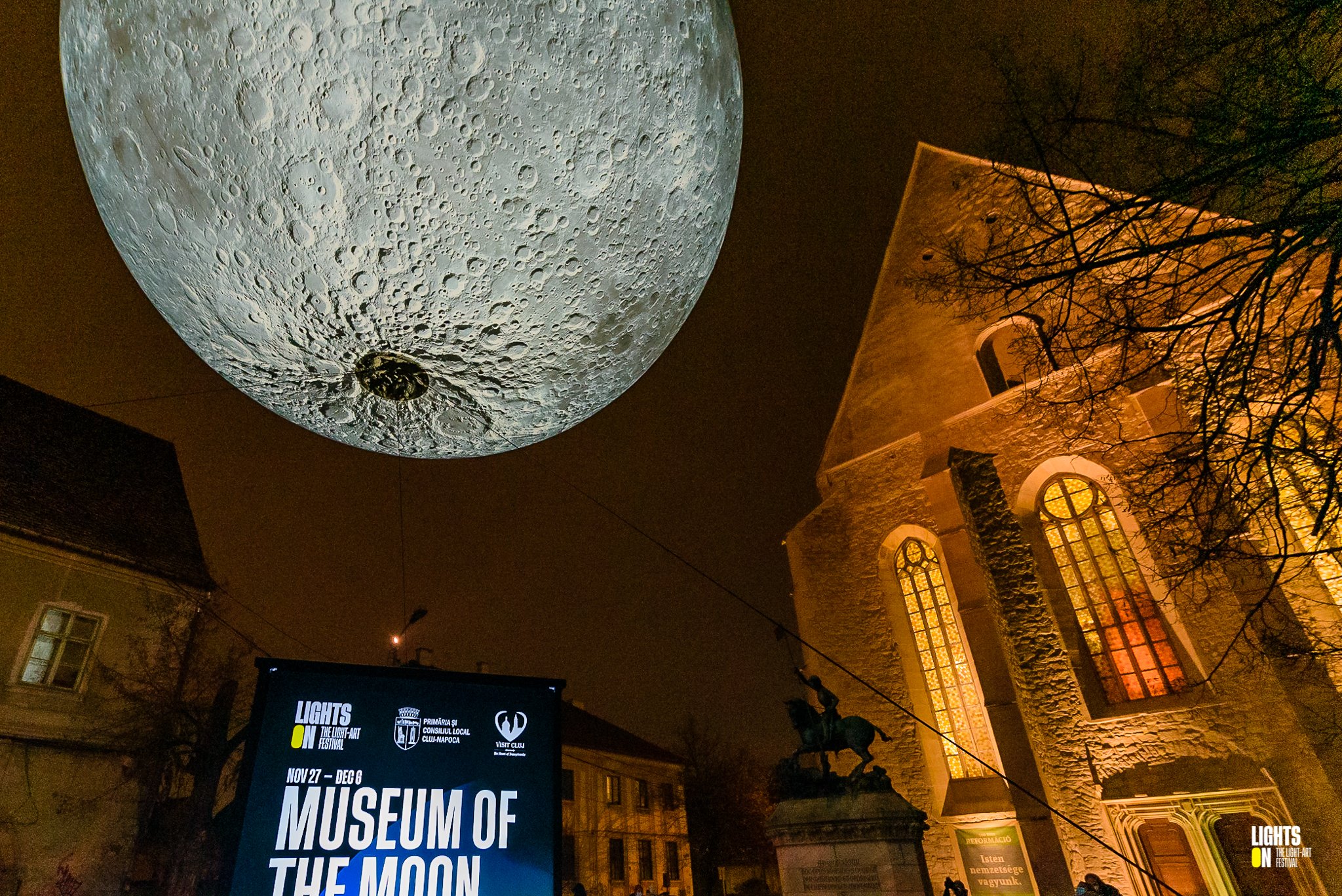

D.K.: What’s next?
A.D.: There are many plans in motion, we dedicate a lot of hard work to making our projects take place. I would really like to have another exhibition in the US, maybe in New York or San Francisco, and afterward move it to another city in North America, maybe one from Canada, who knows.
Note for our readers:
The “Mi-E Dor De Tine” art installation was exhibited in Washington, DC between February 14 and March 21st, 2022, at The Wharf. You can read more about the launch and see pictures from the event in the blog dedicated to it here.
More about the Lights on Romania projects here: https://lightsonromania.com/en/home.
More about “Mi-E Dor De Tine” projects here: https://despredor.org.
